
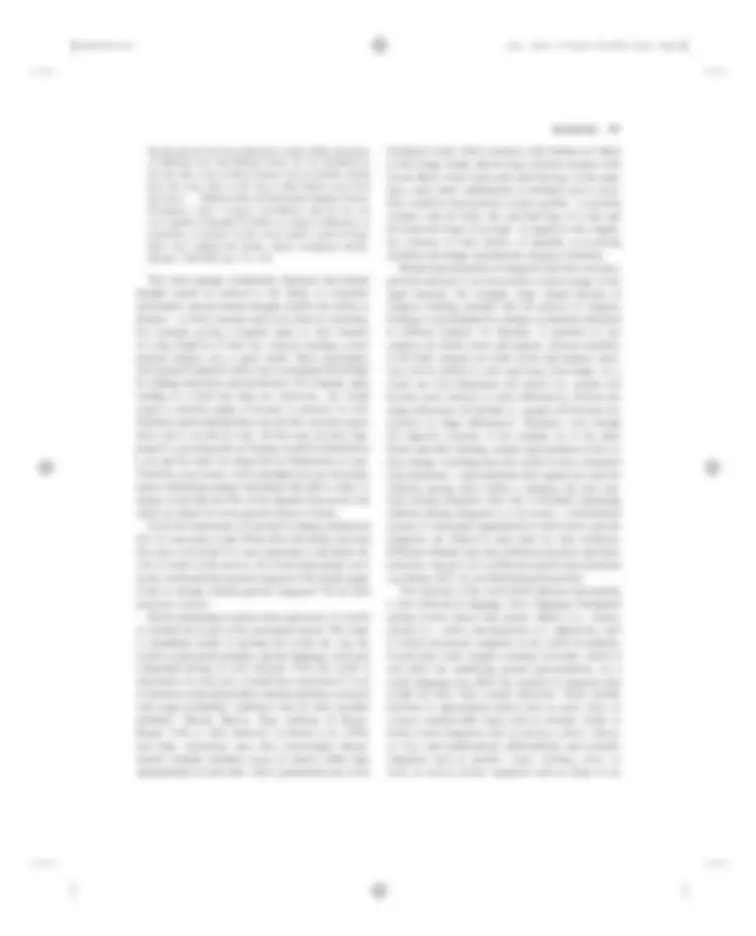
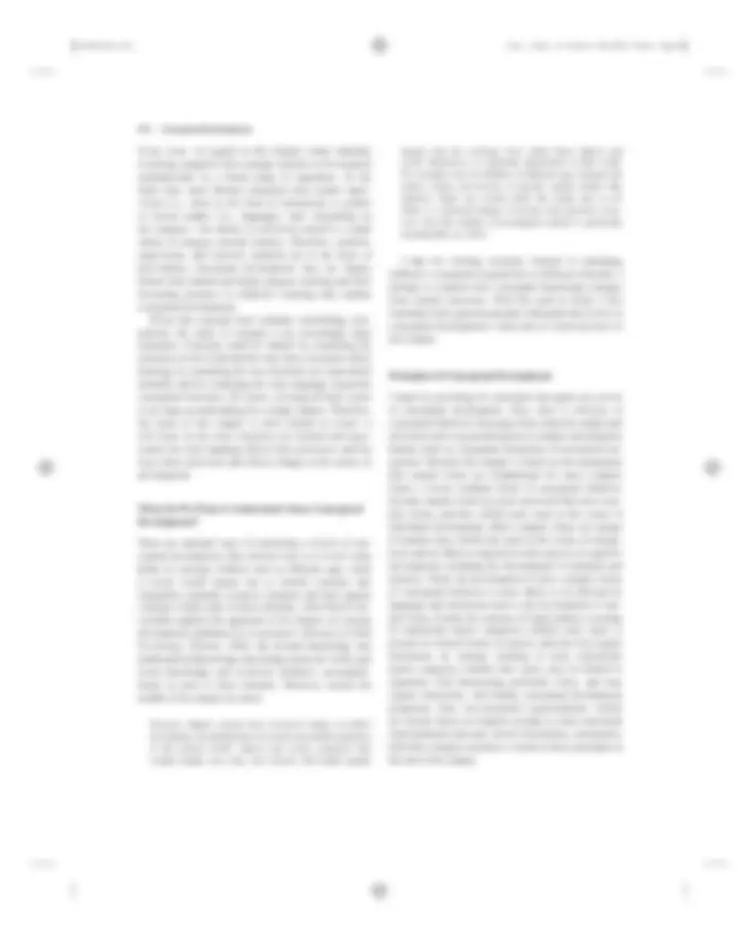
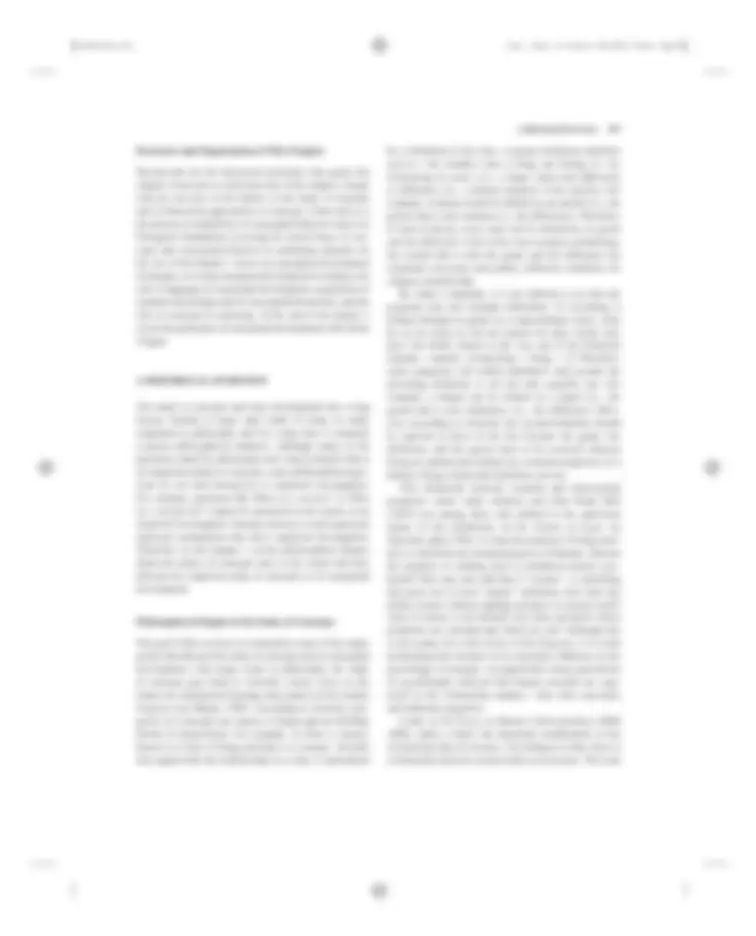
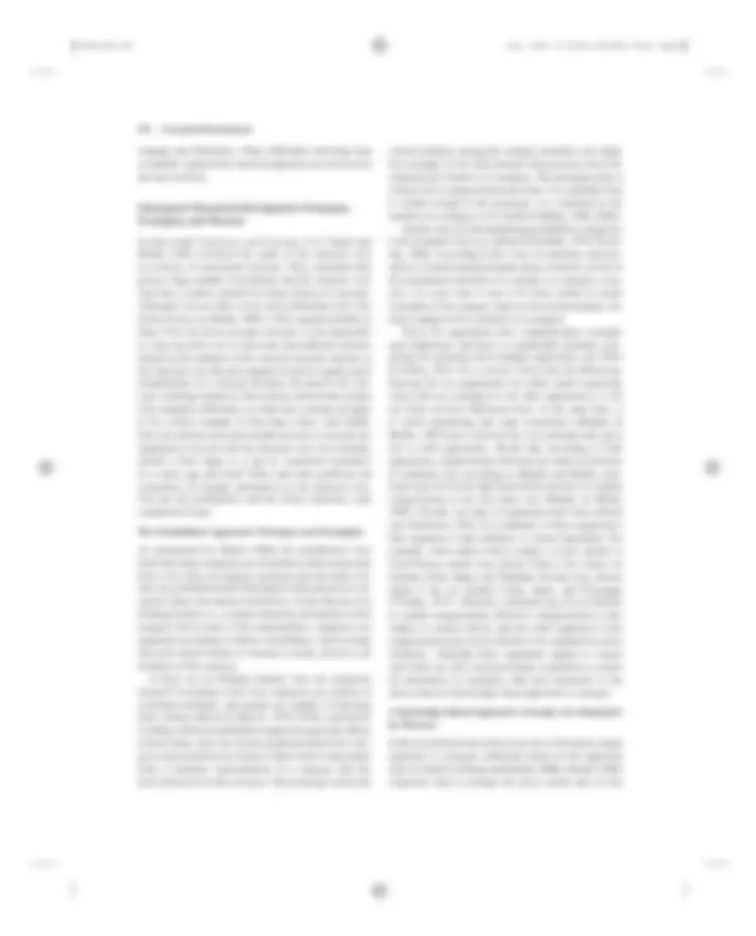
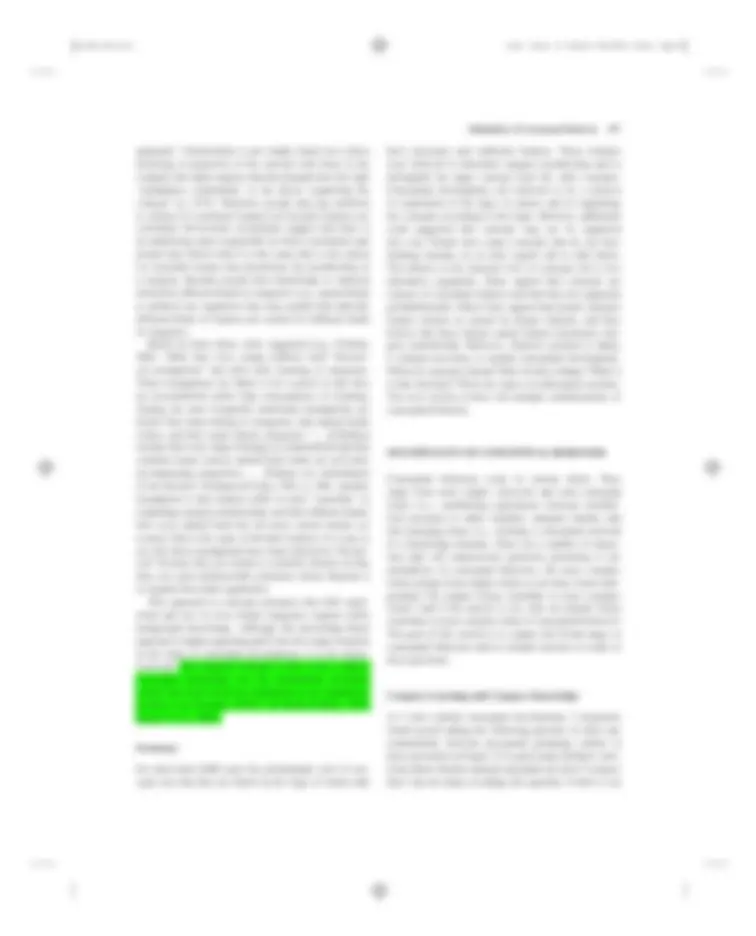
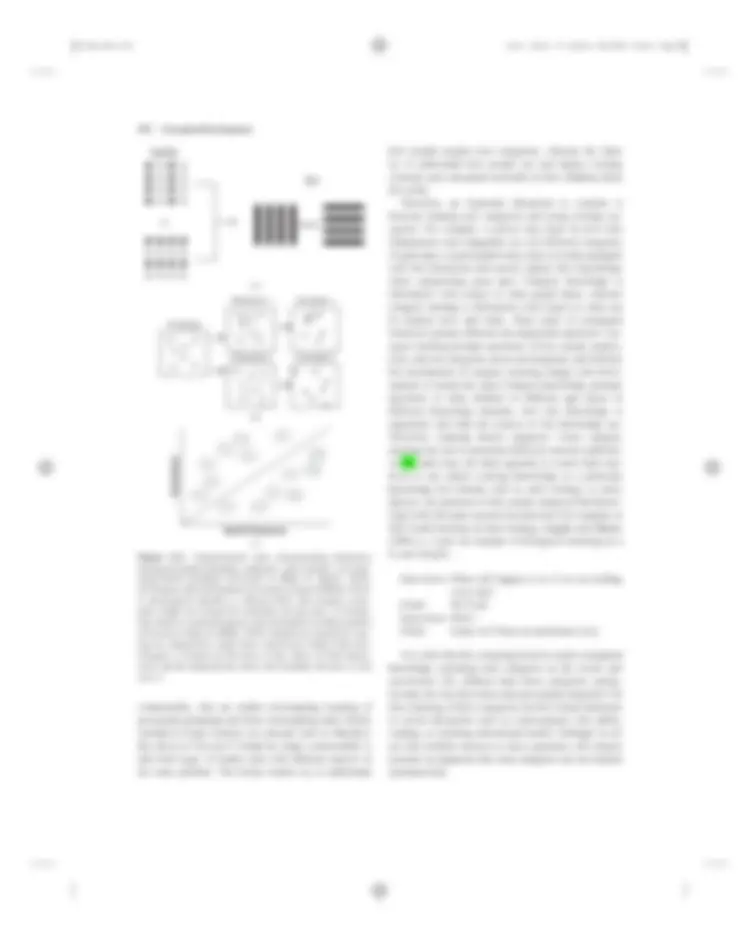
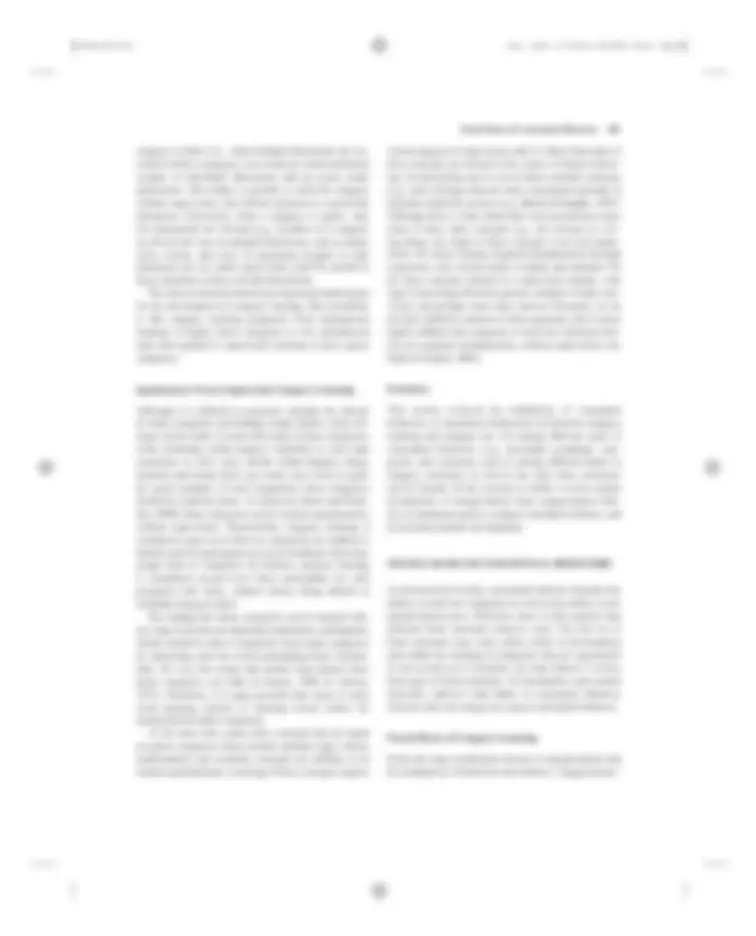
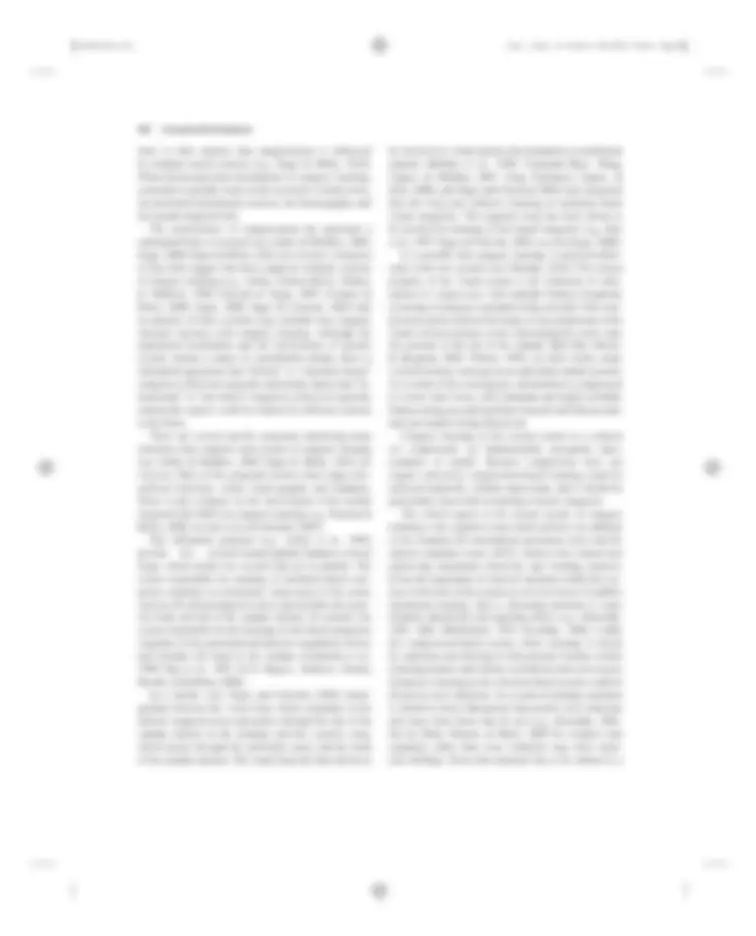
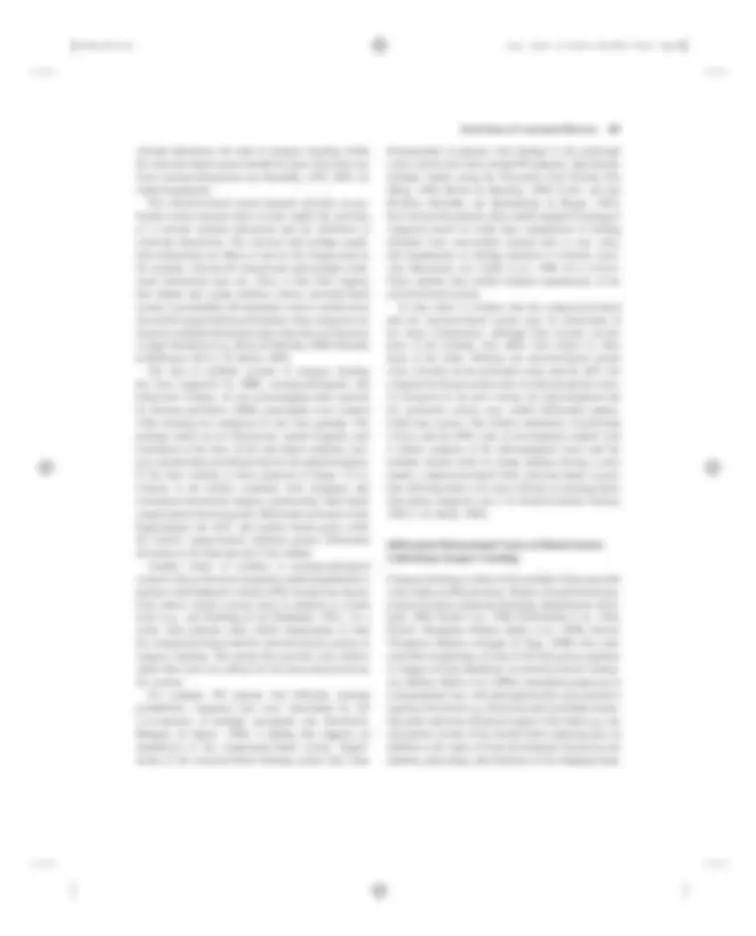
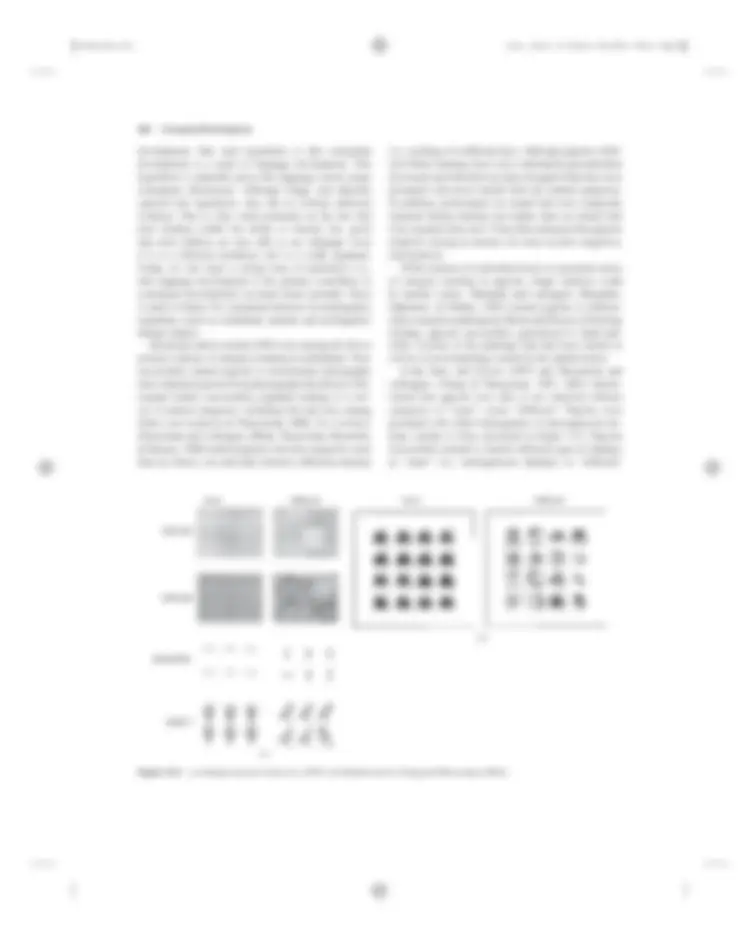
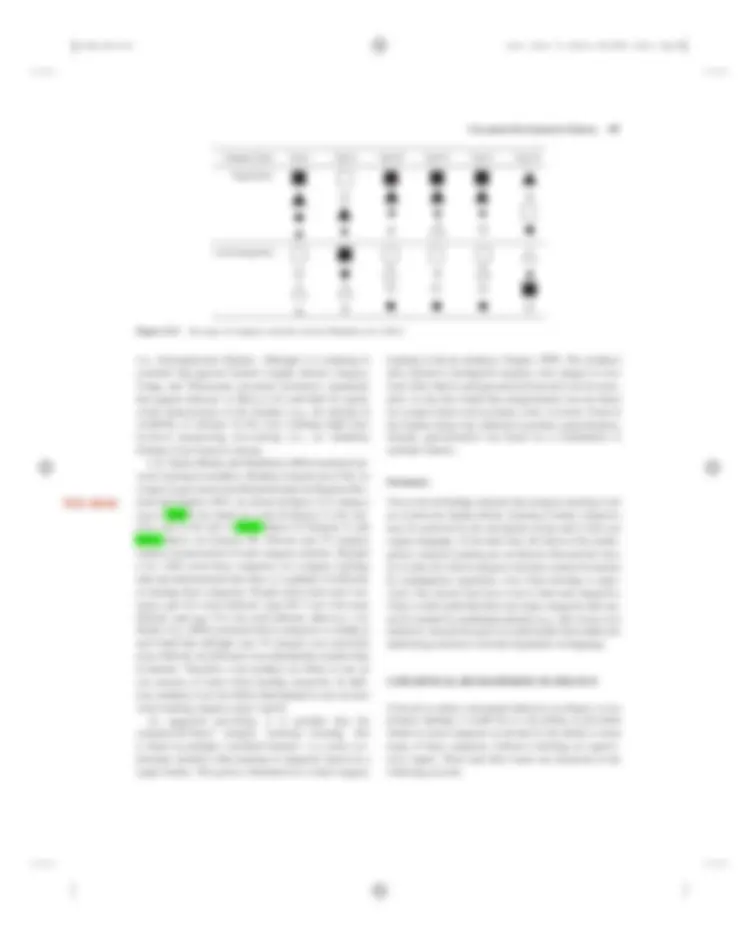
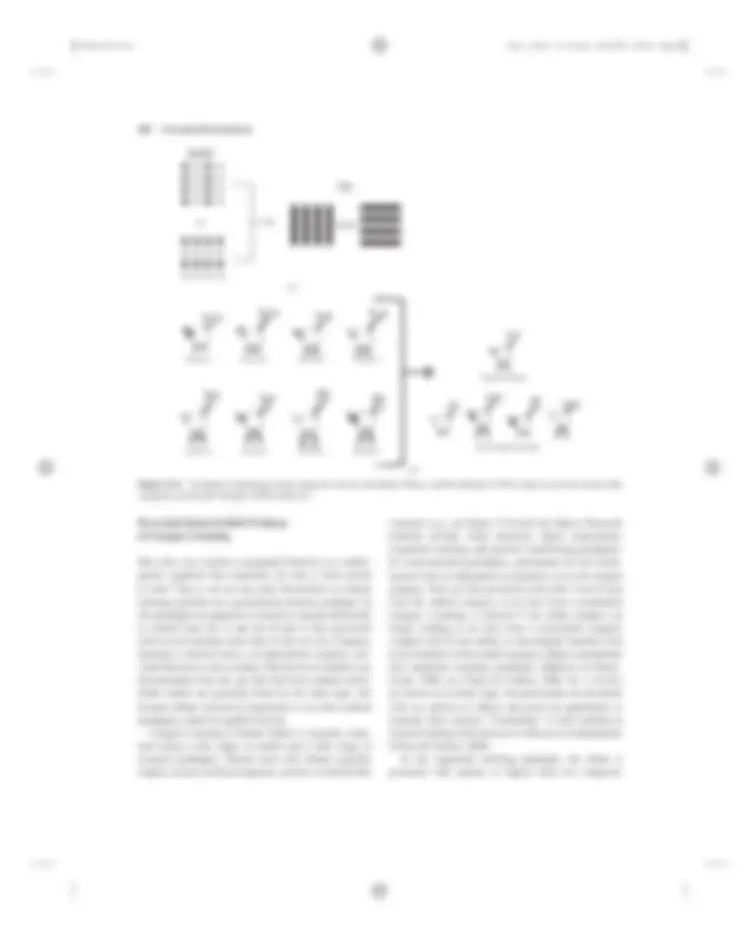
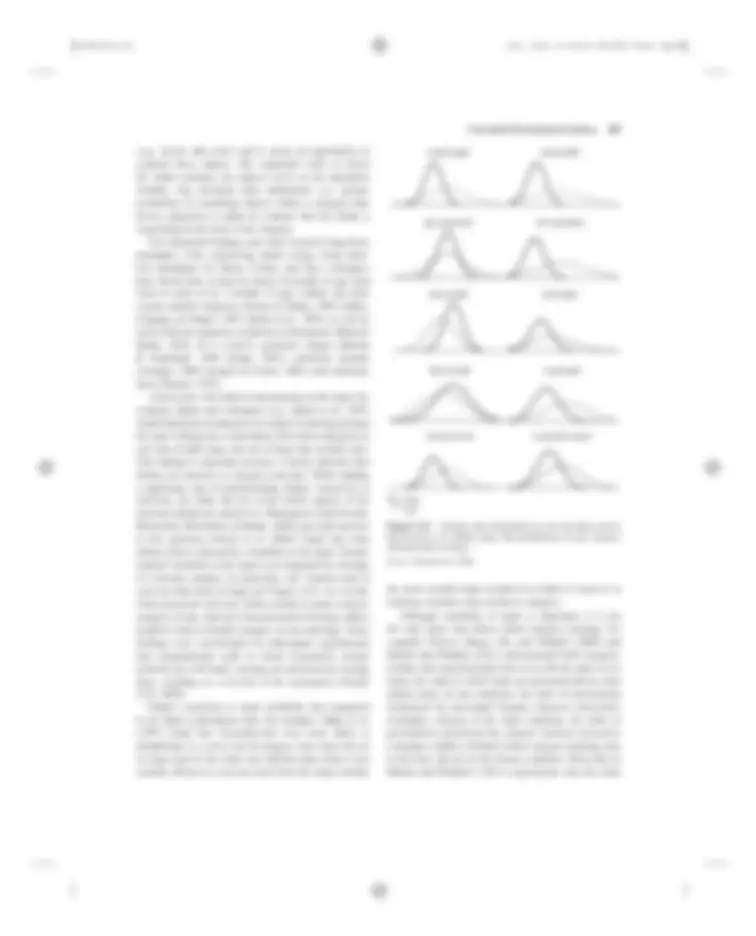
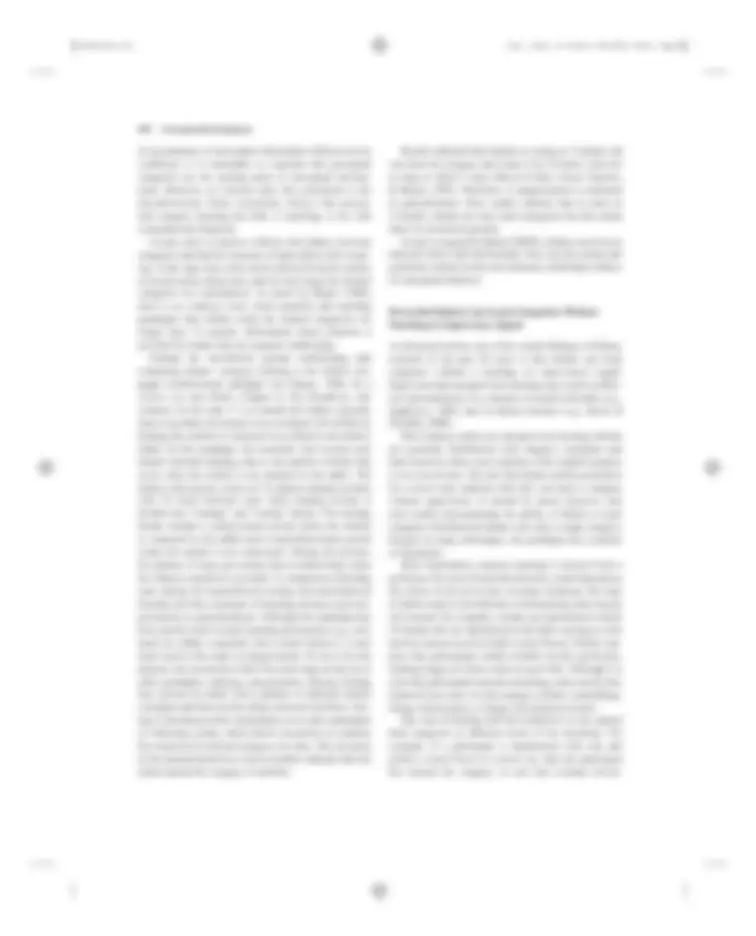
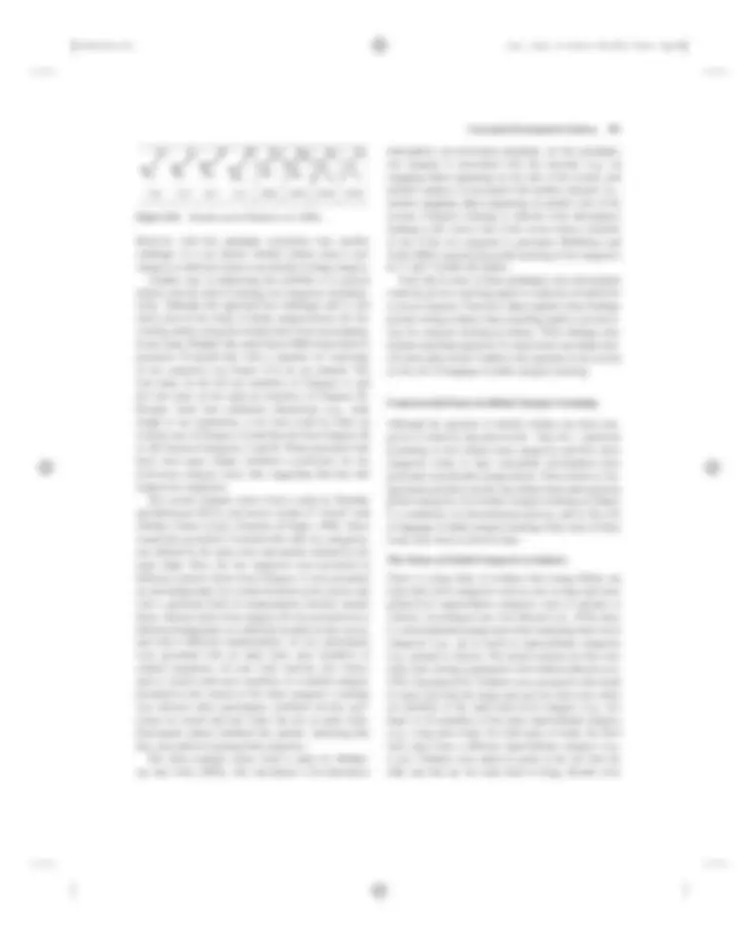
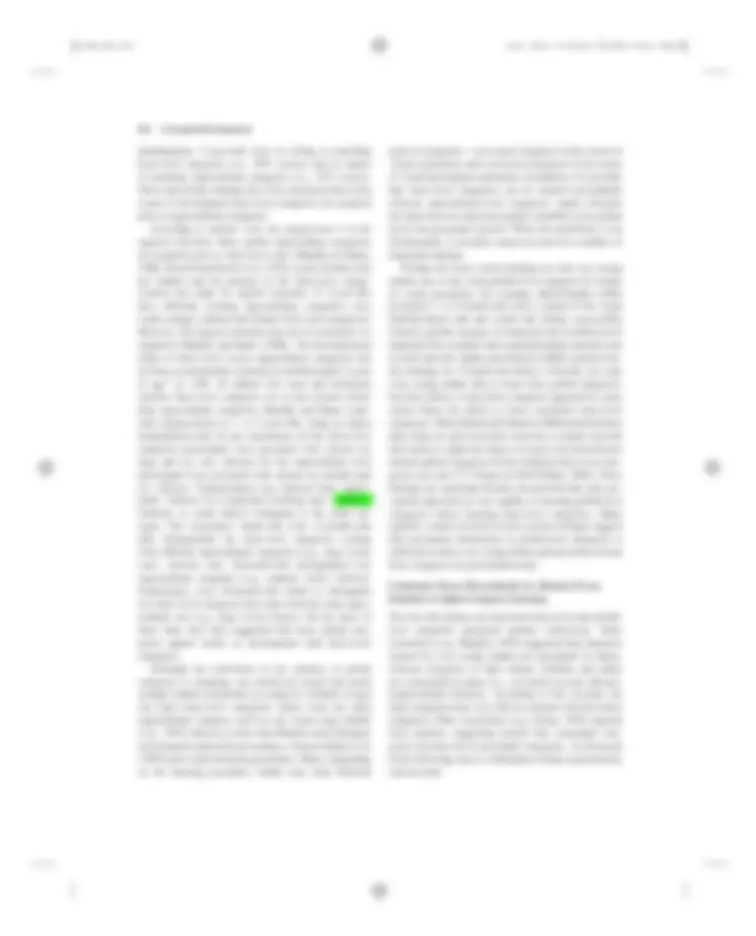
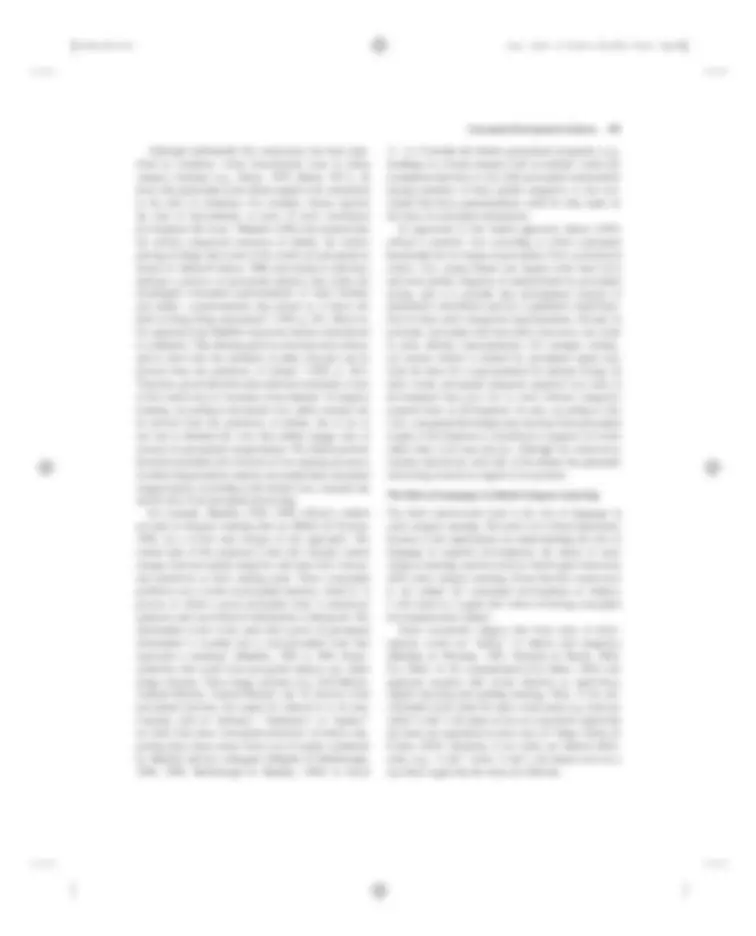
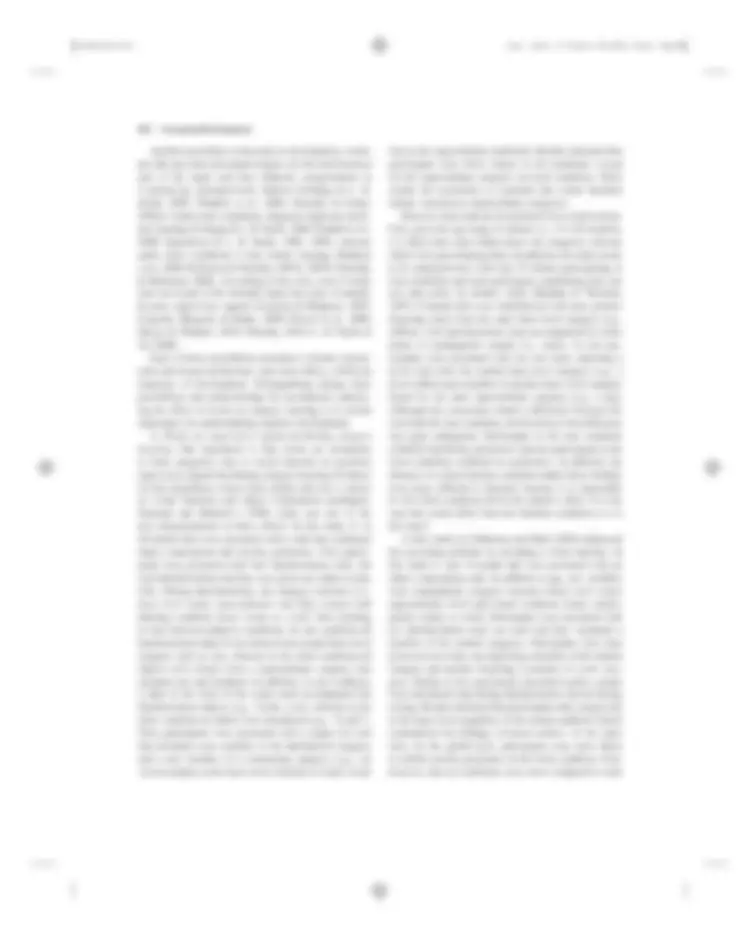
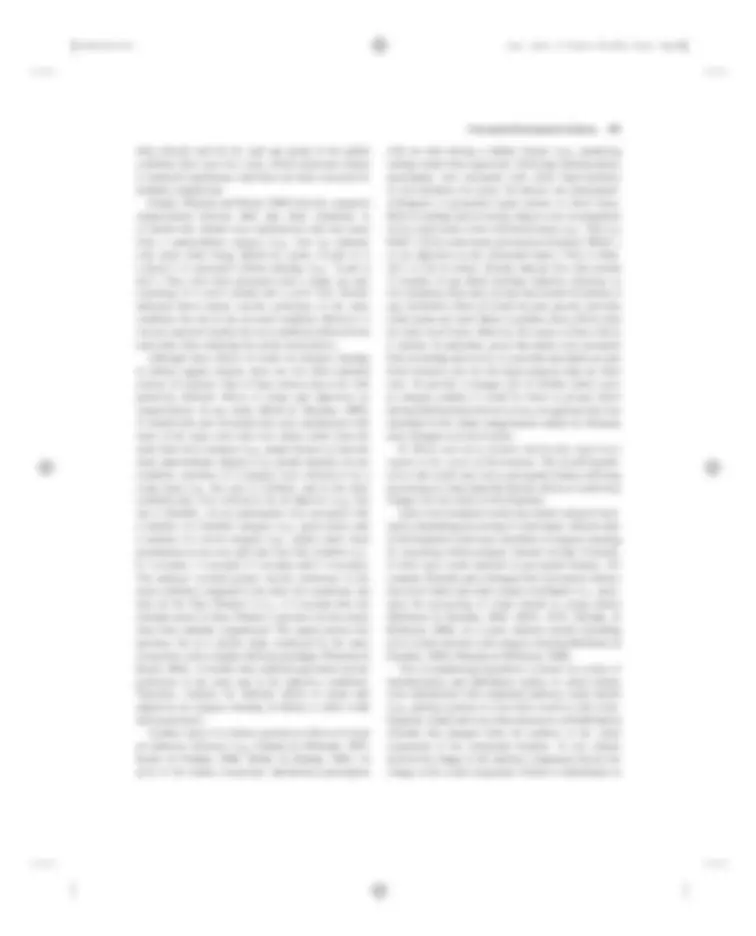
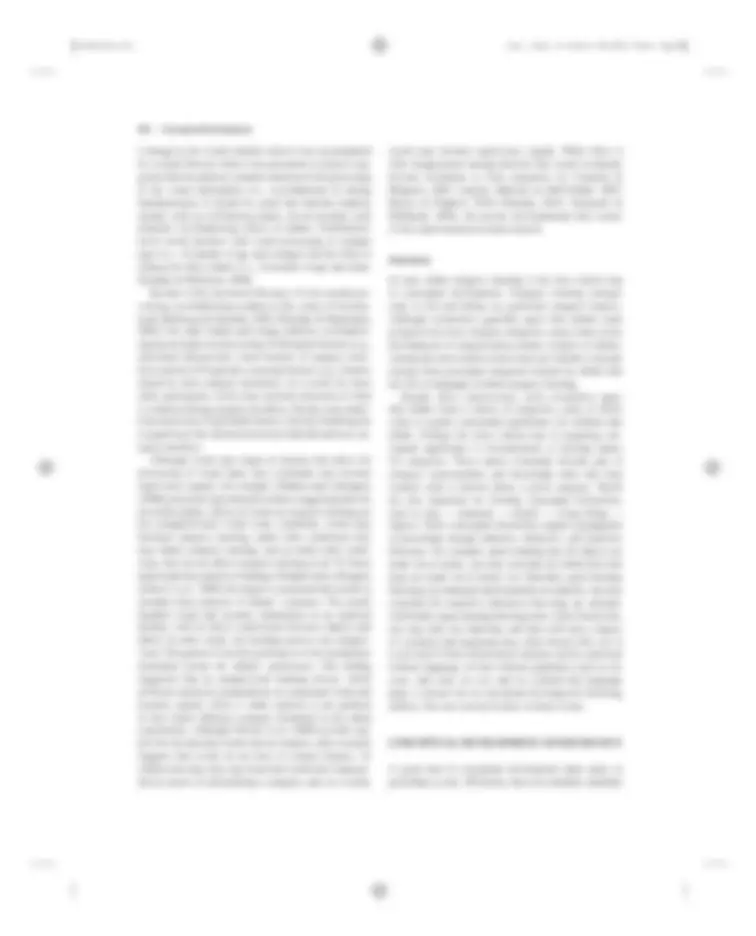
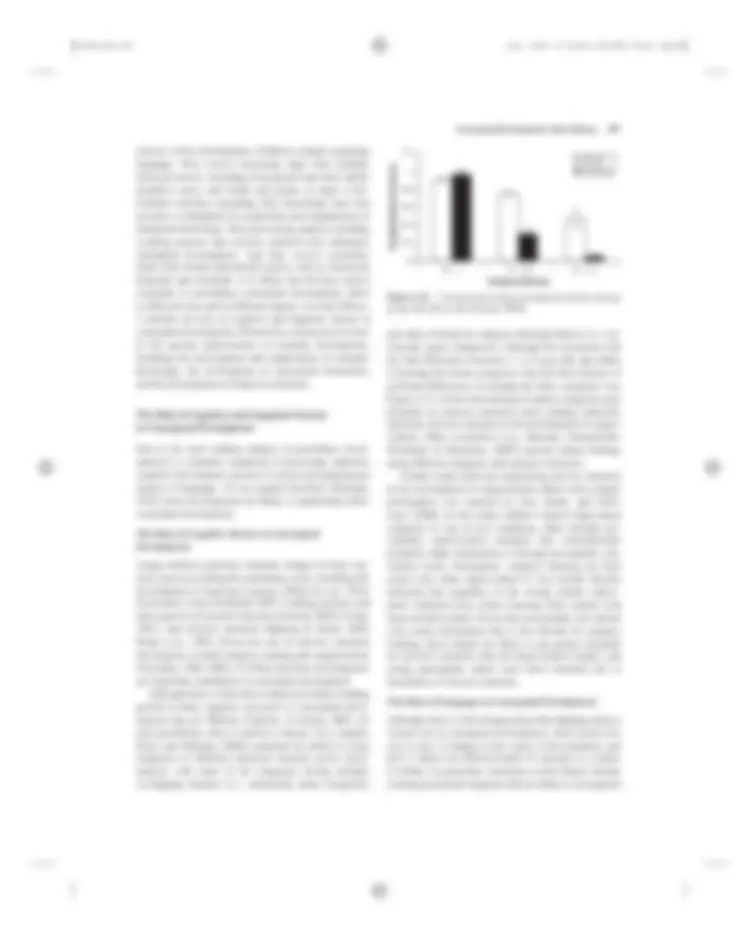
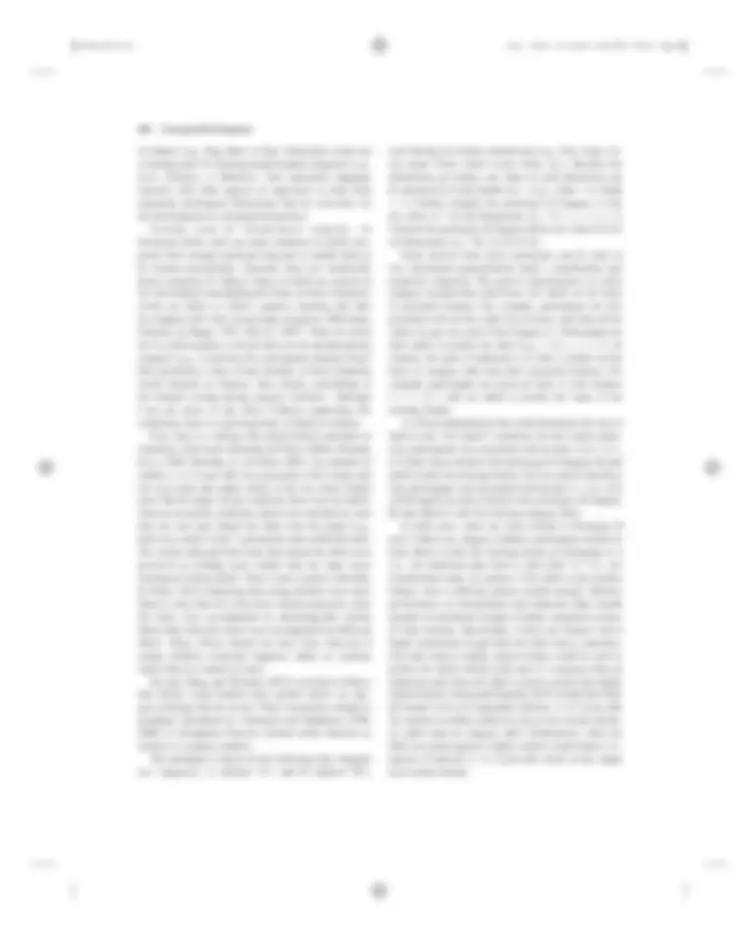
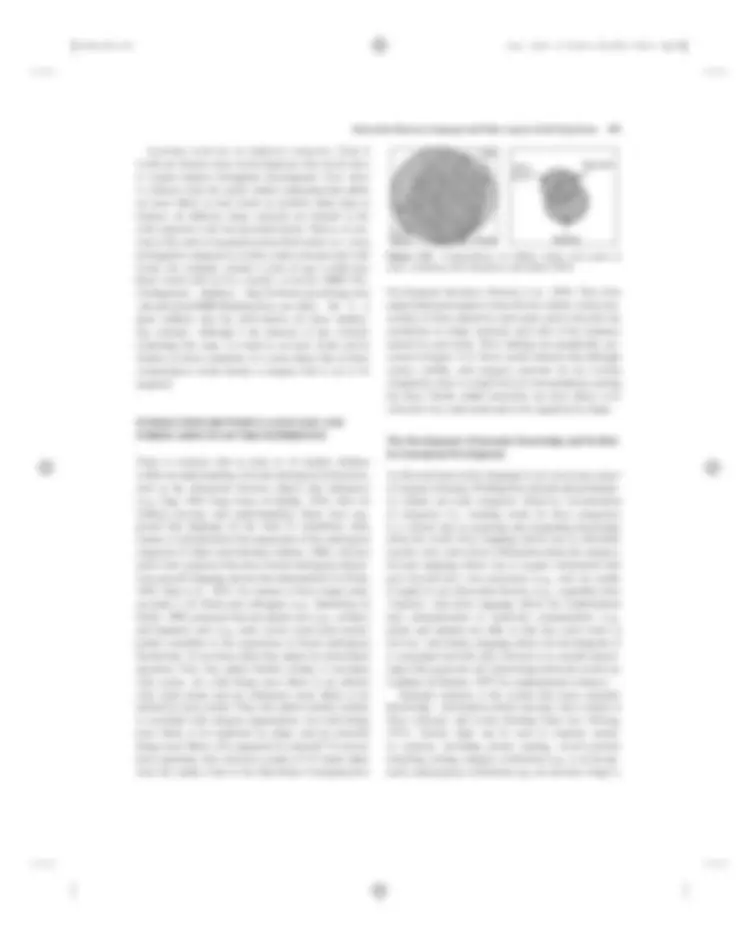
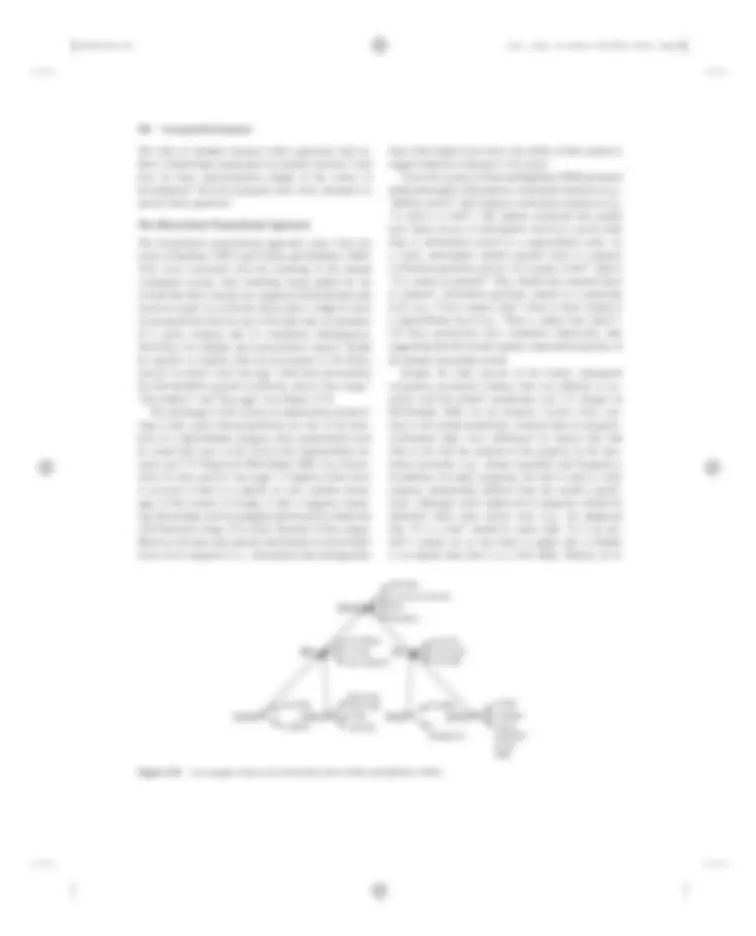
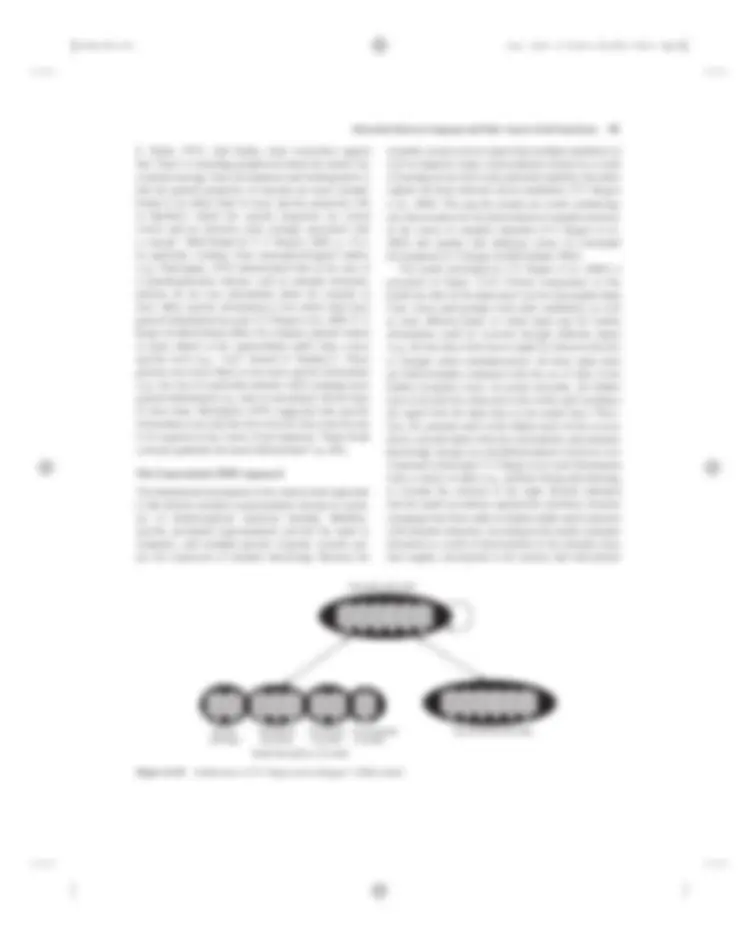
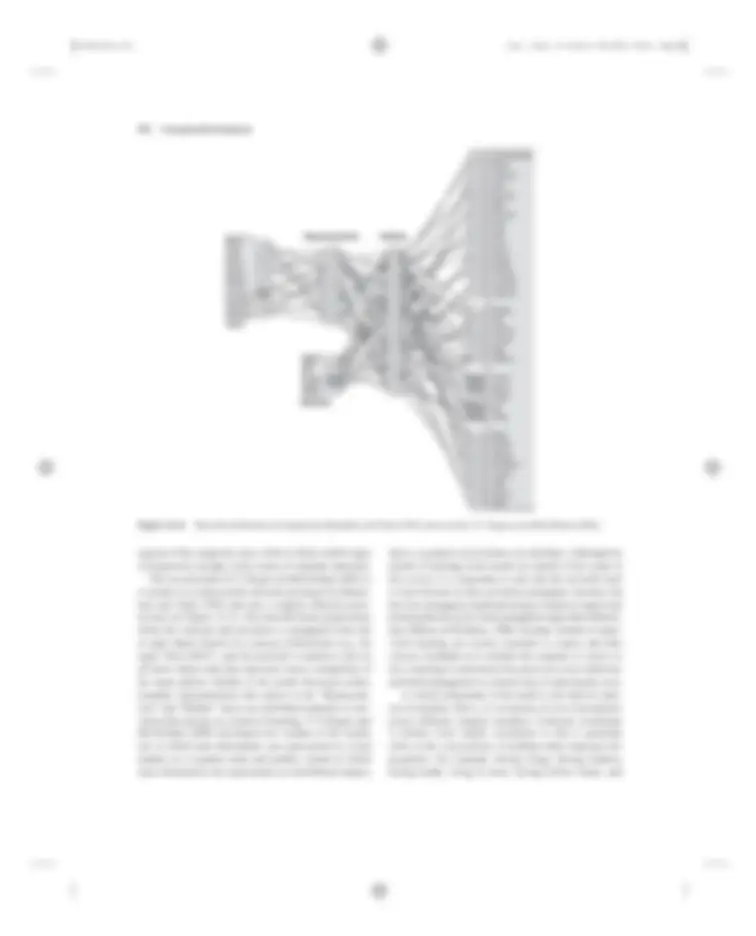
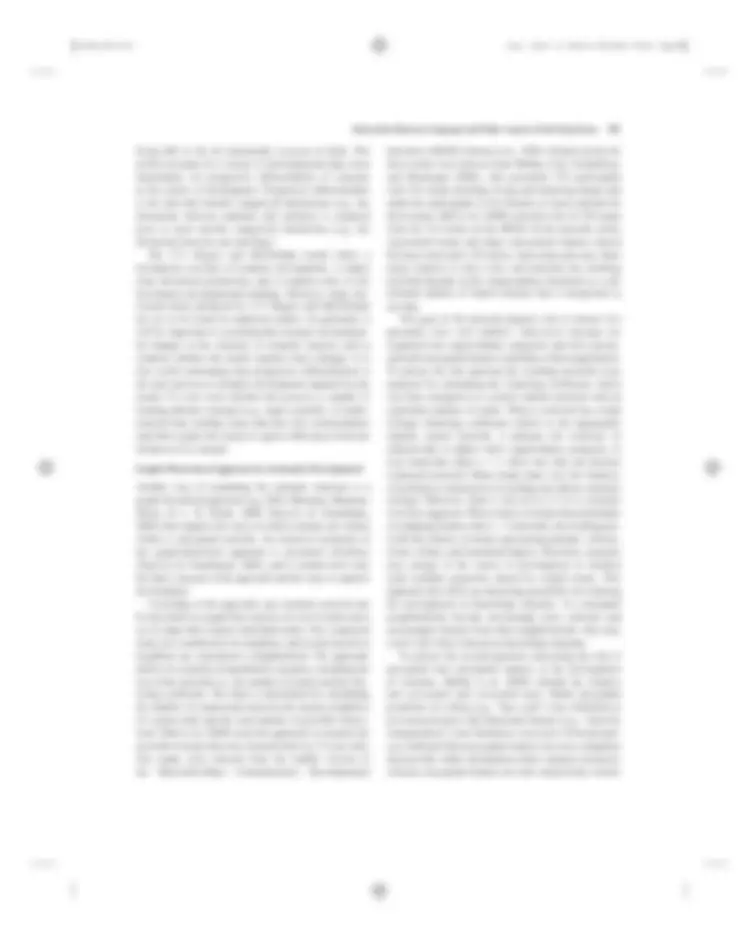
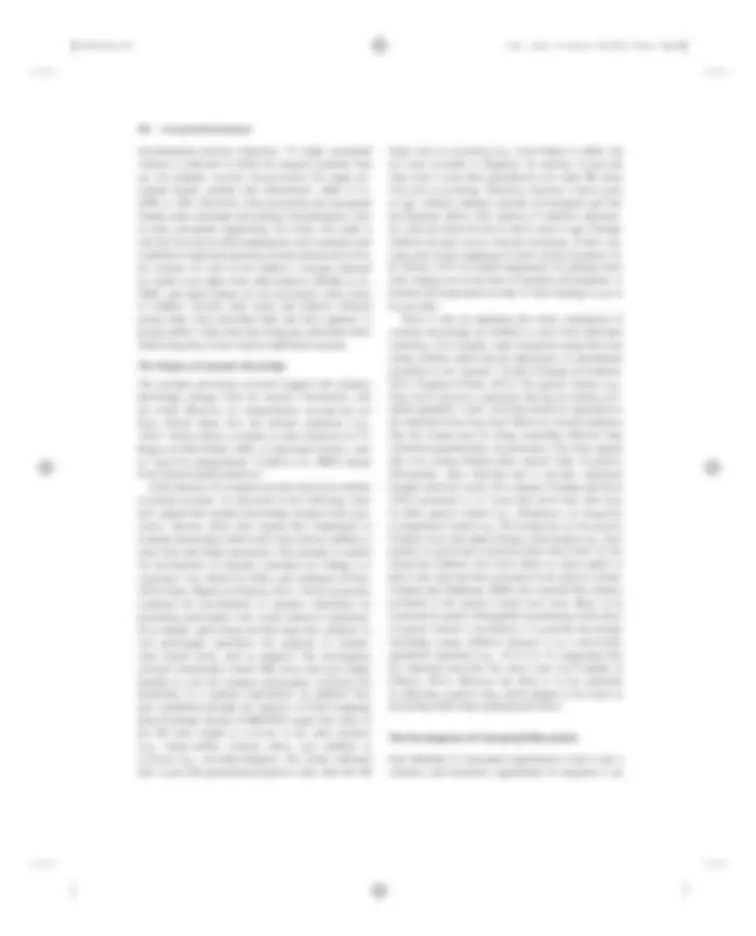
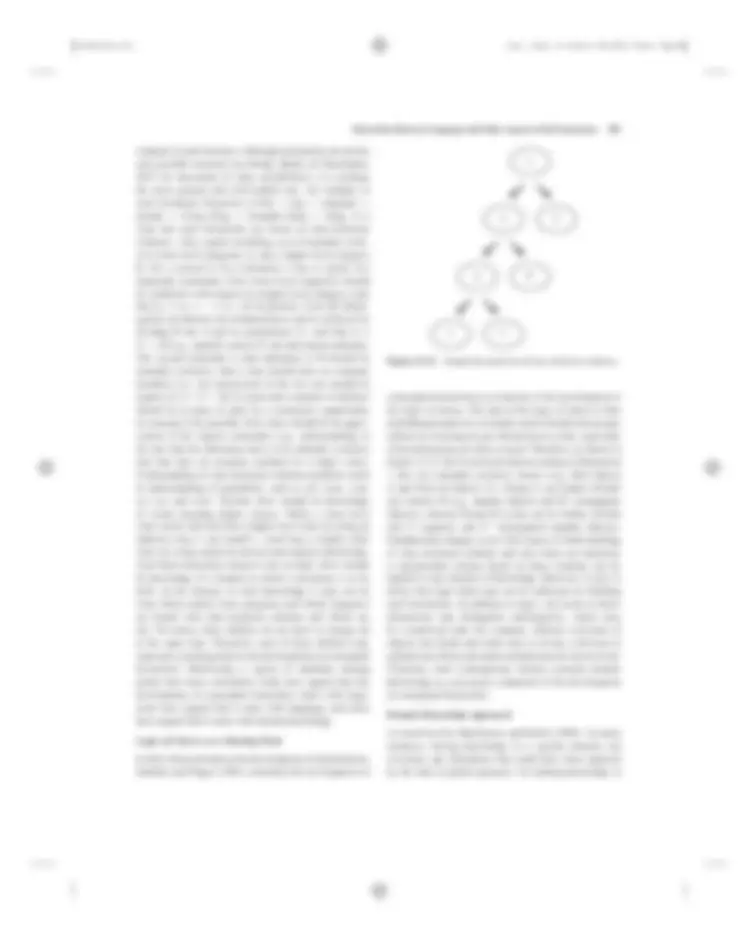
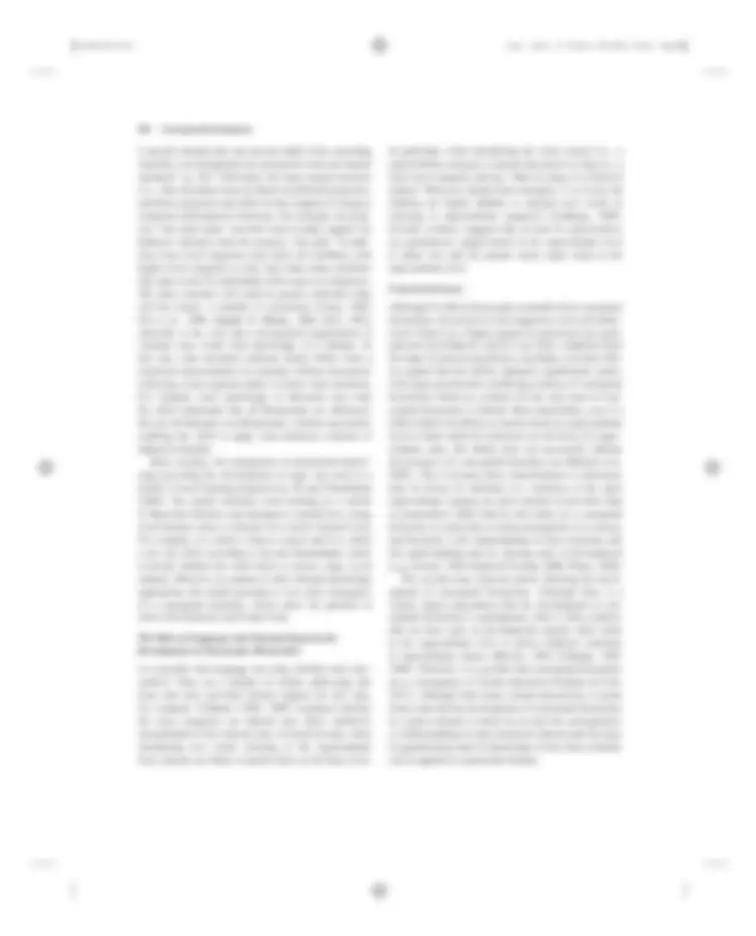
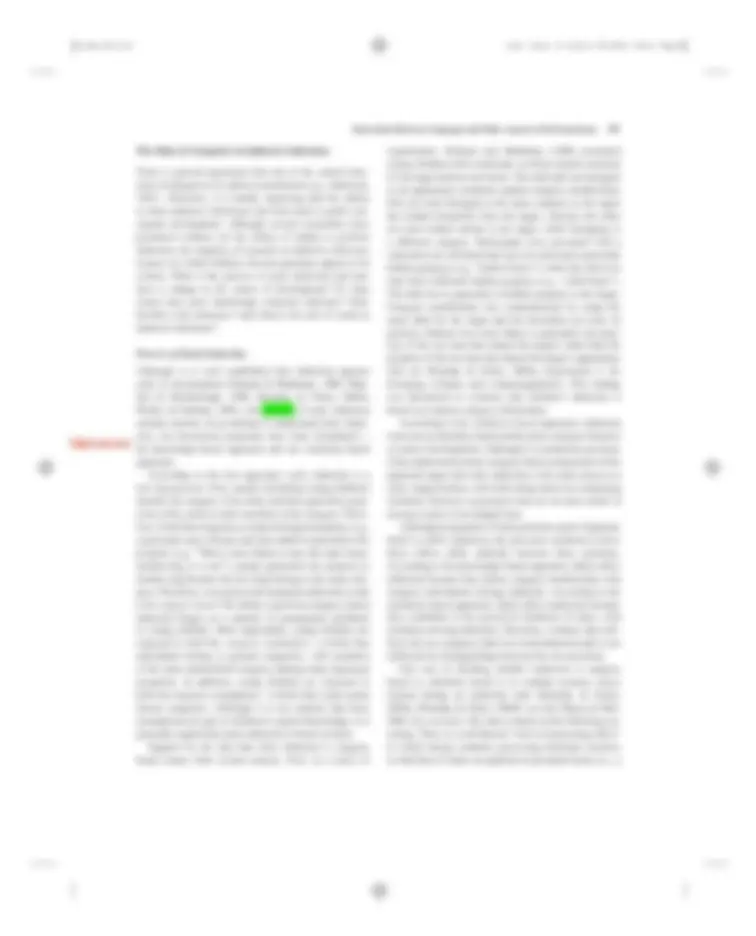
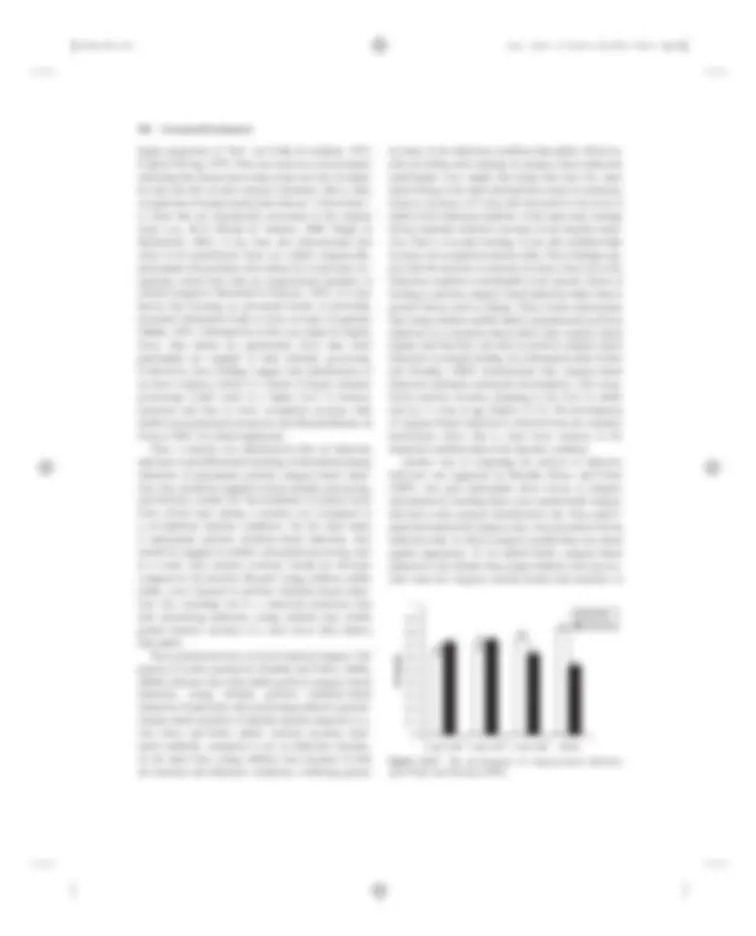
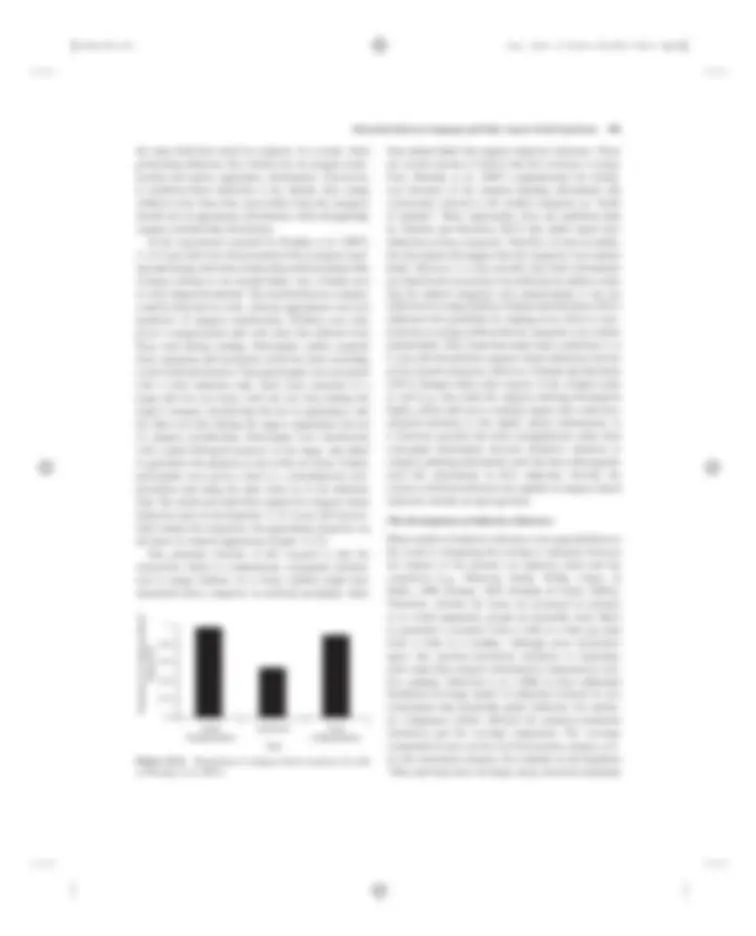
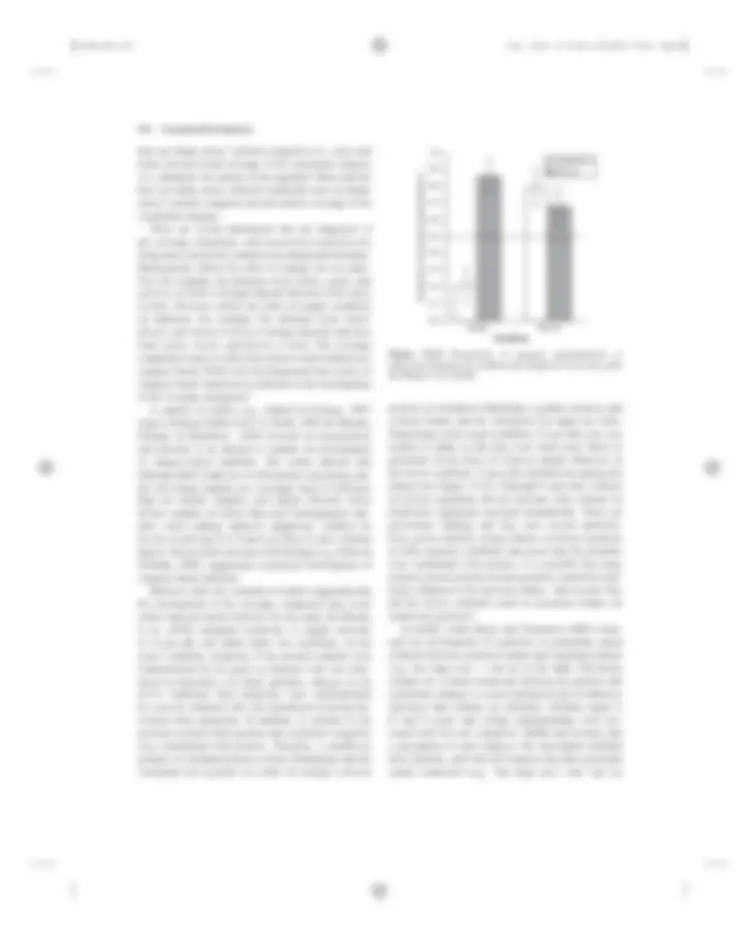
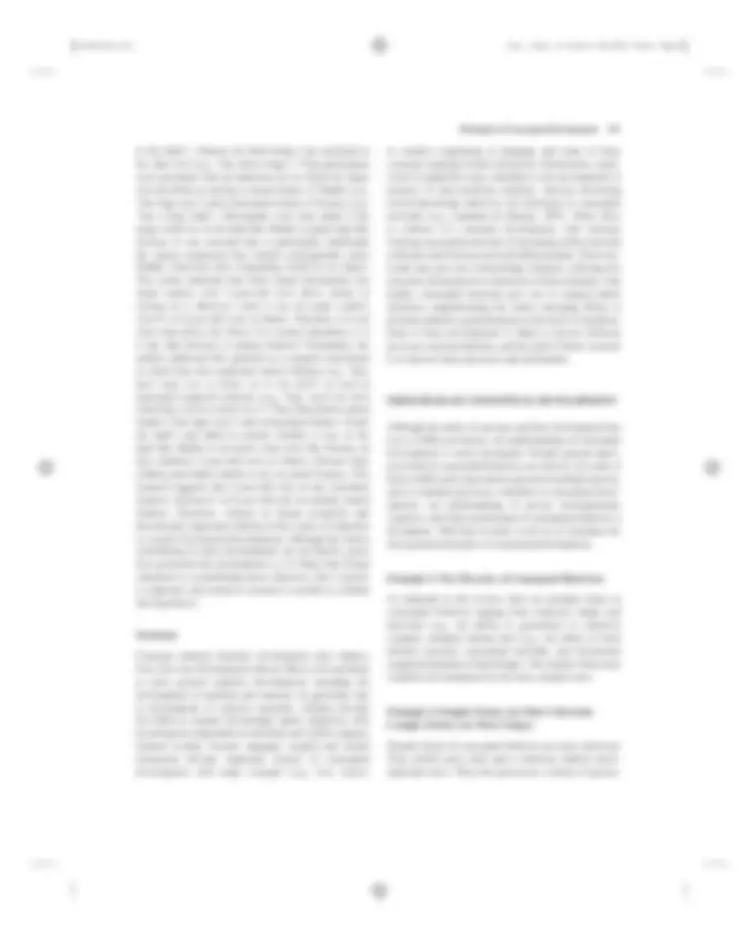
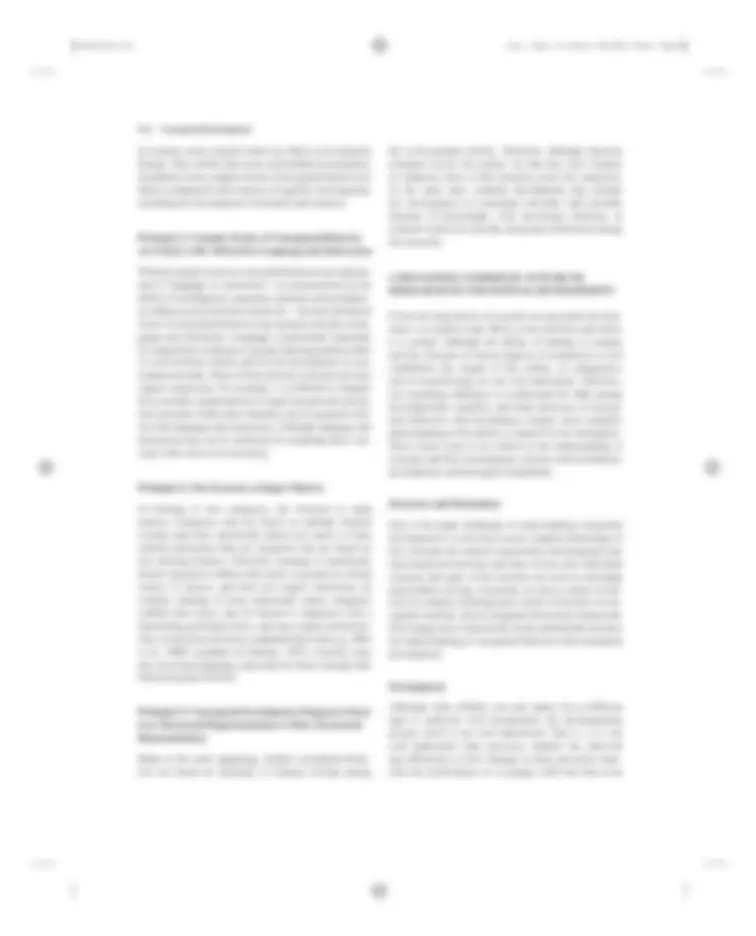
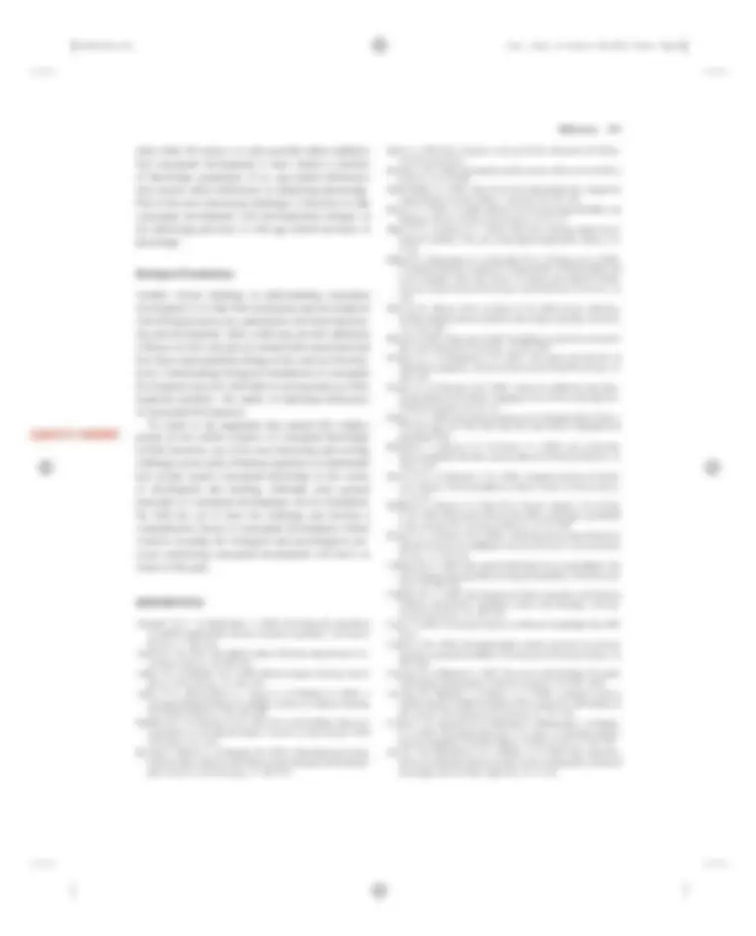
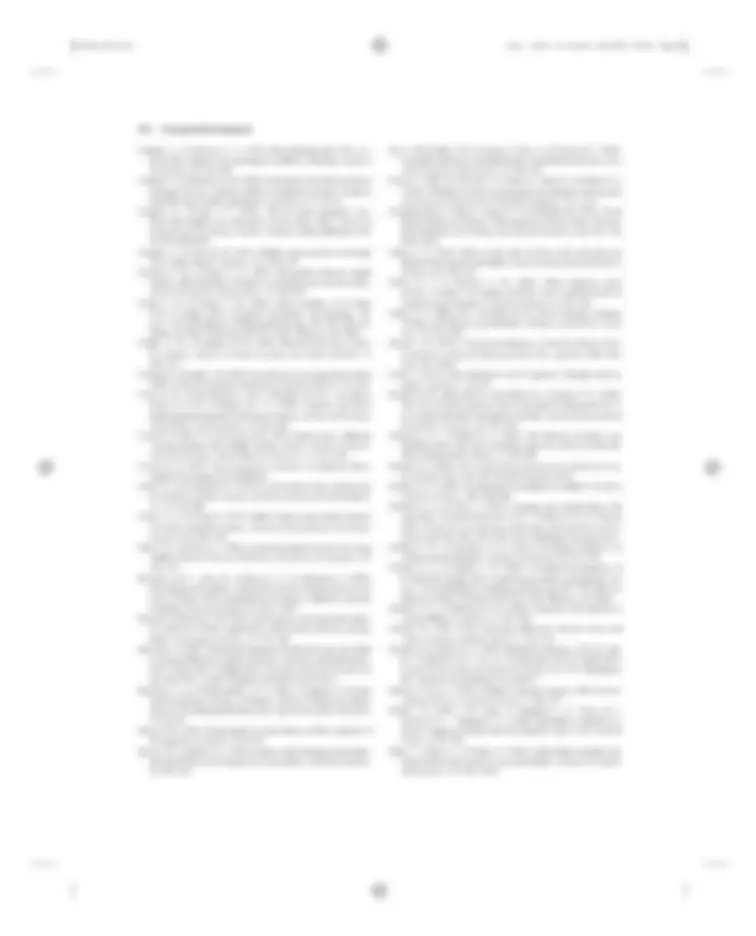
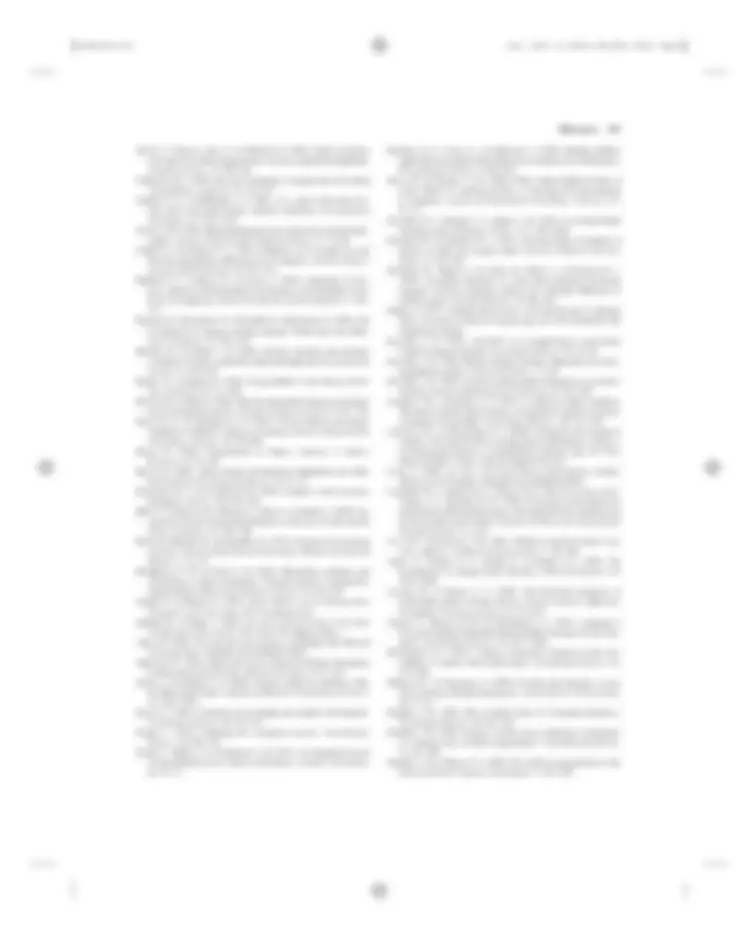
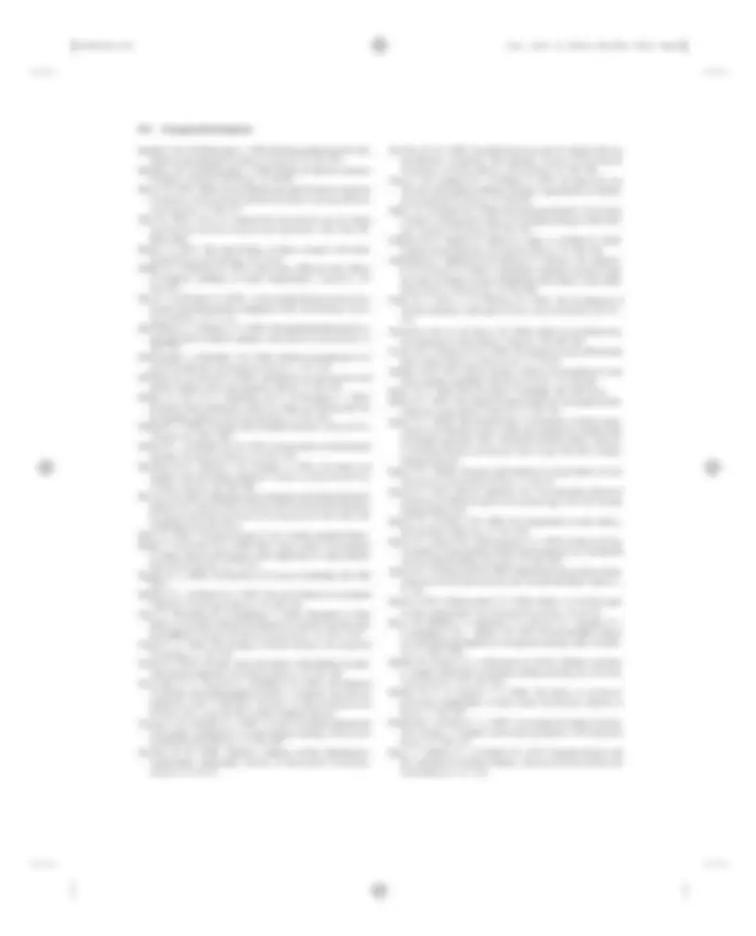
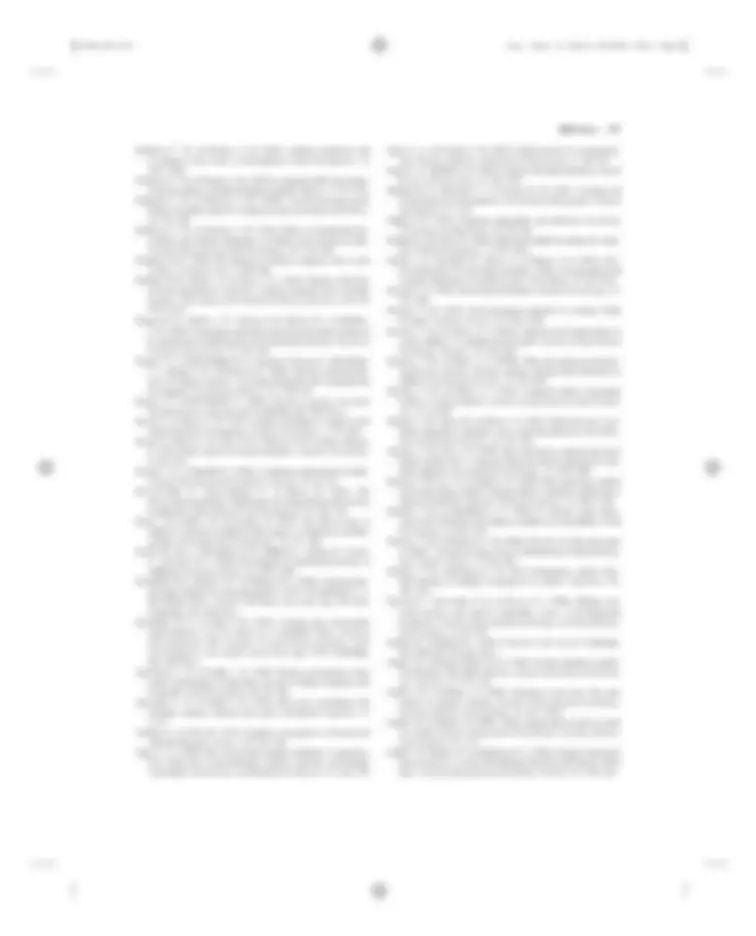
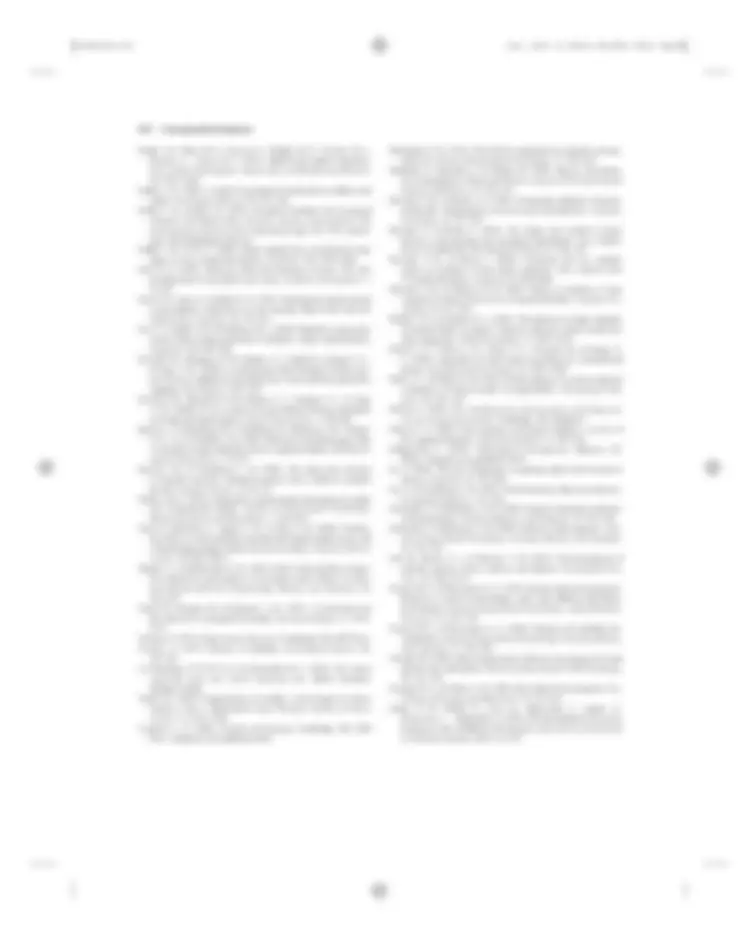


Study with the several resources on Docsity

Earn points by helping other students or get them with a premium plan


Prepare for your exams
Study with the several resources on Docsity

Earn points to download
Earn points by helping other students or get them with a premium plan
Community
Ask the community for help and clear up your study doubts
Discover the best universities in your country according to Docsity users
Free resources
Download our free guides on studying techniques, anxiety management strategies, and thesis advice from Docsity tutors
The probabilistic approach to category learning, focusing on the assumptions of beliefs in category inclusion, natural kinds, and word denotation. It also discusses the distinctions in category structure, including syntactic, ontological, taxonomic, organizational, and other differences. Kloos and Sloutsky's proposal of statistical density as a measure of category structure is introduced. The document also touches upon the implications of dense categories for prelinguistic infants' learning and the interaction between language and other aspects of experience.
What you will learn
Typology: Study notes
1 / 50

This page cannot be seen from the preview
Don't miss anything!











































VLADIMIR SLOUTSKY
INTRODUCTION 469 What Are Concepts? 470 What Do We Want to Understand About Conceptual Development? 472 Principles of Conceptual Development 472 Structure and Organization of This Chapter 473 A HISTORICAL OVERVIEW 473 Philosophical Origins of the Study of Concepts 473 Early Psychological Theories: The Classical Approach: Piaget and Vygotsky 475 Subsequent Theoretical Development: Prototypes, Exemplars, and Theories 476 Summary 477 MULTIPLICITY OF CONCEPTUAL BEHAVIOR 477 Category Learning and Category Knowledge 477 Perceptual Groupings, Categories, Concepts, and Conceptual Networks 479 Different Kinds of Categories 480 Spontaneous Versus Supervised Category Learning 481 Summary 481 NEURAL BASES OF CONCEPTUAL BEHAVIORS 481 Neural Bases of Category Learning 481 Differential Maturational Course of Brain Systems Underlying Category Learning 483 Neural Bases of Conceptual Processing 485 Summary 485 CATEGORIZATION IN NONHUMAN ANIMALS 485 Summary 487 CONCEPTUAL DEVELOPMENT IN INFANCY 487 Preverbal Infants Exhibit Evidence of Category Learning 488
Preverbal Infants Can Learn Categories Without Teaching or Supervisory Signal 490 Controversial Issues in Infant Category Learning 491 Summary 496 CONCEPTUAL DEVELOPMENT AFTER INFANCY 496 The Role of Cognitive and Linguistic Factors in Conceptual Development 497 INTERACTION BETWEEN LANGUAGE AND OTHER ASPECTS OF THE EXPERIENCE 499 The Development of Semantic Knowledge and Its Role in Conceptual Development 499 The Development of Conceptual Hierarchies 504 The Role of Categories in Inductive Inference 507 Summary 511 PRINCIPLES OF CONCEPTUAL DEVELOPMENT 511 Principle 1: The Diversity of Conceptual Behaviors 511 Principle 2: Simpler Forms Are More Universal; Complex Forms Are More Unique 511 Principle 3: Complex Forms of Conceptual Behavior Are Likely to Be Affected by Language and Instruction 512 Principle 4: The Structure of Input Matters 512 Principle 5: Conceptual Development Progresses From Less Structured Representations to More Structured Representations 512 CONCLUDING COMMENTS: FUTURE OF RESEARCH ON CONCEPTUAL DEVELOPMENT 512 Structure and Mechanism 512 Development 512 Biological Foundations 513 REFERENCES 513
People are remarkably smart: They use language, pos- sess complex motor skills, make nontrivial inferences, develop and use scientific theories, make laws, and adapt to complex dynamic environments. At the same time, they
do not exhibit these skills at birth. Each of these skills requires sophisticated conceptual knowledge, and one of the most interesting and exciting challenges in the study of human cognition is to understand how people acquire this knowledge in the course of development and learning. In this chapter 1 address this challenge and review research
469
470 Conceptual Development
on conceptual development that contributes to our under- standing of these issues. Given the centrality of concepts to human intelligence and the complexity of the issue of conceptual development, there is little surprise that the study of concepts and their development gave rise to many competing theories. The previous edition of the Handbook included a chapter on conceptual development written by Susan Gelman and Charles Kalish (2007) that provided extensive coverage of domains of conceptual knowledge and what children know in these domains. The current chapter has a different focus: It is concerned with how children acquire conceptual knowledge and how domains themselves may emerge as a consequence of learning and development. Although there are multiple theoretical approaches to conceptual development, I organize the material using a particular theoretical framework. In the most general sense, I assume that there are three important aspects to human concepts. First, there is the ability to form categories (or equivalence classes of discriminable entities) by focusing on commonalities and abstracting away differences. For example, dogs are quite different from one another, yet people can treat them as a class. Second, there is the ability to lexicalize some of these categories (e.g., apply the word cat to the category of cats) and use the word in reference to an individual and the entire class. As a result, people can refer to entities (even when the entities are not present) as well as to the entire class (e.g., I have a cat at home and I like cats ). And third, there is the ability to use words as knowledge hubs for accumulating knowledge about these lexicalized categories, and subsequently form more abstract categories and make predictions. For example, having learned that plants and animals are alike in that they need water and nutrients and they grow, reproduce, and die, people may infer that both plants and animals are alive. Similarly, having learned that a cat has beta cells that produce insulin, one may conclude that other cats (and perhaps other mammals) have beta cells as well. I further assume that the ability to form categories is shared with other mammals and perhaps with other vertebrates, whereas the latter two abilities are uniquely human. Such evolutionary history is not unique to con- cepts. Although the vast majority of nonhuman animals have a sex drive, only humans have romantic poetry. Similarly, humans are not alone in having the basic drive for food, but only humans developed culinary art. And as there would be no culinary art without a food drive, there would be no lexicalized categories without the basic ability to form categories. Therefore, in this chapter 1 consider
the basic ability to learn and use categories as well as the ability to form and use lexicalized concepts serving as knowledge hubs. I also consider how language, instruction, and selective attention transform the former ability into the later ability—the transformation that is at the heart of conceptual development.
What Are Concepts?
In his chapter focusing on concepts (Chapter 12 of the
Q
Principles of Psychology ), William James (1890) wrote, “Our principle only lays it down that the mind makes continual use of the notion of sameness, and if deprived of it, would have a different structure from what it has.” If the mind is capable of detecting sameness in a diverse set of objects, then a concept is an output of this process. In other words, the mind can treat different things as if they were equivalent in some way. Such mentally created equivalence classes of different things are defined as concepts. Examples vary from chairs (obviously, chairs are nonidentical, but merely equivalent in some way) to odd numbers to extremely abstract concepts, such as cause or effect. Although it is a matter of philosophical debate between Nominalists and Realists as to whether abstract equivalence classes exist outside the mind, the existence of concepts as mental entities is hardly controversial. I will not focus on these philosophical debates, focusing instead on how the mind learns, represents, stores, organizes, and uses concepts. To appreciate the importance of concepts to humans’ lives, it is worthwhile to consider the question How would humans’ mental life be without concepts? One can find an example in “Funes the Memorious,” a short story written by the great Argentinean writer Jorge Luis Borges. In the novel, Borges describes a man, Funes, who had a phenom- enal memory and tried building his intellectual life around it, remembering all individual instances, instead of using more general concepts.
Locke, in the seventeenth century, postulated (and rejected) an impossible idiom in which each individual object, each stone, each bird and branch had an individual name; Funes had once projected an analogous idiom, but he had renounced it as being too general, too ambiguous. In effect, Funes not only remembered every leaf on every tree of every wood, but even every one of the times he had perceived or imagined it. He determined to reduce all of his past experience to some seventy thousand recollections, which he would later define numerically.... He was … almost incapable of general, platonic ideas. It was not only difficult for him to understand
472 Conceptual Development
living room. As argued in this chapter, many naturally occurring categories have enough structure to be acquired spontaneously by a broad range of organisms. At the same time, more abstract categories may require super- vision (i.e., often in the form of instruction), a symbol or lexical marker (i.e., language), and—depending on the category—the ability to selectively attend to a small subset of category-relevant features. Therefore, symbols, supervision, and selective attention are at the heart of post-infancy conceptual development: they are largely absent from animal and infant category learning and their increasing presence in children’s learning may explain conceptual development. Given that concepts have multiple contributing com- ponents, the study of concepts is an exceedingly large enterprise. Concepts could be studied by examining the structures in the world and the ways these structures affect learning, by examining the way structures are represented mentally, and by examining the ways language represents conceptual structures. Of course, covering all these issues is too large an undertaking for a single chapter. Therefore, the focus of this chapter is more limited in scope—I will focus on the ways structures are learned and repre- sented, the ways language affects these processes, and the ways these processes and effects change in the course of development.
What Do We Want to Understand About Conceptual Development?
There are multiple ways of structuring a review of con- ceptual development. One obvious way is to review what kinds of concepts children have at different ages. Such a review would require one to classify concepts into (hopefully) mutually exclusive domains and then sample concepts within each of these domains. John Flavell suc- cessfully applied this approach to his chapter on concept development published in Carmichael’s Manual of Child Psychology (Flavell, 1970). He divided knowledge into mathematical knowledge, knowledge about the world, and social knowledge and reviewed children’s accomplish- ments in each of these domains. However, toward the middle of the chapter he noted,
Previous chapter sections have reviewed studies of child’s developing conceptualization of certain measurable properties of the natural world’s objects and events, properties like weight, length, area, time, and velocity. One might equally
inquire into his evolving views about these objects and events themselves, as particular phenomena in that world. For example, how do children of different ages interpret the nature, origin, and activity of specific natural entities like shadows, night, sun, clouds, birth, life, death, and so on? There is a potential danger of posing such questions, how- ever, since the number of investigative entities is practically inexhaustible. (p. 1022)
I take his warning seriously: Instead of cataloging children’s conceptual acquisitions in different domains, I attempt to examine how conceptual knowledge emerges from simpler processes. With this goal in mind, I first formulate some general principles that guide this review of conceptual development. I then turn to a brief preview of this chapter.
Principles of Conceptual Development
I begin by providing five principles that guide my review of conceptual development. First, there is diversity of conceptual behaviors that range from relatively simple and universal (such as generalization) to complex and uniquely human (such as conceptual hierarchies of lexicalized cat- egories). Because this chapter is based on the assumption that simpler forms are foundational for more complex forms, I review multiple forms of conceptual behavior. Second, simpler forms are more universal than more com- plex forms, and they exhibit early onset in the course of individual development. More complex forms are unique to humans; they exhibit late onset in the course of ontoge- nesis and are likely to depend on other aspects of cognitive development, including the development of attention and memory. Third, the development of more complex forms of conceptual behavior is more likely to be affected by language and instruction than is the development of sim- pler forms. Fourth, the structure of input matters: Learning of statistically denser categories exhibits early onset, is present in a broad variety of species, and does not require instruction. In contrast, learning of more statistically sparse categories exhibits later onset, may be limited to organisms with functioning prefrontal cortex, and may require instruction. And finally, conceptual development progresses from less-structured representations (which are mostly based on featural overlap) to more-structured representations that may involve hierarchies, taxonomies, and other complex structures. I return to these principles at the end of the chapter.
A Historical Overview 473
Structure and Organization of This Chapter
Having laid out the theoretical principles that guide this chapter, I turn now to a brief preview of the chapter. I begin with an overview of the history of the study of concepts and of theoretical approaches to concepts. I then turn to a discussion of multiplicity of conceptual behavior and to its biological foundations (covering the neural bases of con- cepts and conceptual behavior in nonhuman animals). In the rest of the chapter 1 focus on conceptual development in humans, covering conceptual development in infancy, the role of language in conceptual development, acquisition of semantic knowledge and of conceptual hierarchies, and the role of concepts in reasoning. At the end of the chapter 1 revisit the principles of conceptual development with which I began.
The study of concepts and their development has a long history. Similar to many other fields of study, its study originated in philosophy and for a long time it remained a purely philosophical endeavor. Although many of the questions asked by philosophy have had profound effects on empirical studies of concepts, some philosophical ques- tions do not lend themselves to empirical investigation. For example, questions like What are concepts? or What are concepts for? cannot be answered in the course of an empirical investigation. Instead, answers to such questions represent assumptions that drive empirical investigation. Therefore, in this chapter 1 review philosophical debates about the nature of concepts only to the extent that they affected the empirical study of concepts or of conceptual development.
Philosophical Origins of the Study of Concepts
The goal of this section is to summarize some of the major points that affected the study of concepts and of conceptual development. Like many issues in philosophy, the study of concepts goes back to Aristotle, whose views on the matter are summarized (among other places) in his treatise Organon (see Barnes, 1995). According to Aristotle, cate- gories (or concepts) are classes of things and are building blocks of propositions. For example, in Plato is human , human is a class of things and thus is a concept. Aristotle also argued that the membership in a class is determined
by a definition of the class. A proper definition identifies species —the smallest class a thing can belong to—by referencing its genus (i.e., a larger class) and differentia or difference (i.e., a distinct property of the species). For example, a human would be defined as an animal (i.e., the genus) that is also rational (i.e., the difference). Therefore, at least in theory, every class can be defined by its genus and the difference. Cast in the more modern terminology, the central idea is that the genus and the difference are separately necessary and jointly sufficient conditions for category membership. By today’s standards, it is not difficult to see that the proposal runs into multiple difficulties. If everything is defined through its genus (or a superordinate class), what do we do when we run out classes? In other words, how does one define classes at the very top of the hierarchy (human → animal →living thing → thing → ?)? Therefore, some categories will remain undefined. And second, the preceding definition is not the only possible one. For example, a human can be defined as a biped (i.e., the genus) that is also featherless (i.e., the difference). How- ever, according to Aristotle, the second definition should be rejected in favor of the first because the genus, the difference, and the species have to be essential ; whereas being an animal and rational are essential properties of a human, being a biped and featherless are not. This distinction between essential and nonessential properties seems rather arbitrary and John Stuart Mill (1843) was among those who pointed to the capricious nature of this distinction. In his System of Logic , he famously asked, Why is it that the property of being ratio- nal is considered an essential property of humans, whereas the property of cooking food is considered merely acci- dental? One may also add that if “essence” is something that gives rise to every “proper” definition, how does one define essence without making reference to essence itself? And, if essence is not defined, how does one know which properties are essential and which are not? Although this is not a place for a full review of the Organon , it is worth mentioning here because of its enormous influence on the psychology of concepts. As argued later, many generations of psychologists believed that human concepts are orga- nized in the Aristotelian manner—they have necessary and sufficient properties. Locke, in his Essay on Human Understanding (1689/ 1888), made a minor but important modification of the Aristotelian idea of essences. According to Locke, there is a distinction between nominal and real essences. The term
A Historical Overview 475
Early Psychological Theories: The Classical Approach: Piaget and Vygotsky
The philosophical ideas just discussed (recall that these date back to Aristotle) gave rise to the classical approach to concepts. The core idea of this approach is the logic of classes—a foundation of syllogistic reasoning. According to the logic of classes, classes of progressively increasing generality can be created by means of abstraction. For example, a boy (defined as a young human male) can be included in a more general class of human males, which in turn can be included in a more general class of humans and so forth. Therefore, as discussed earlier, membership in a more specific class is defined by a combination of a superordinate class (e.g., being a human male in the case of a boy) and a distinctive feature (e.g., being young). Each is necessary, and the two are jointly sufficient to determine membership in a class. The logic of classes presumes at least three additional organizing principles. The first is class inclusion: Subor- dinate classes can be properly included in superordinate classes (all young women are women). Second, any more general (or superordinate) class consists of a finite number of more specific (or subordinate) classes that are exhaus- tive of this general class. For example, the superordinate class of humans can be broken down into women and men that fully exhaust the class of humans. And finally, the sub- classes of a larger class are mutually exclusive—they do not have common members. It is easy to notice that com- mon quantifiers, such as all , some , and none , express all these relations. For example, all expresses the relation of a subordinate class to a superordinate class (e.g., all men are humans), some expresses the relation of a superordinate class to a subordinate class (e.g., some humans are women), and none expresses the relation between the two mutually exclusive classes (e.g., none of the men are women). If the concepts are classes and mature conceptual orga- nization is governed by the logic of classes, then the theory of conceptual development must explain how individuals acquire the logic of classes. Both Piaget (e.g., Inhelder & Piaget, 1964) and Vygotsky (1934/1986) attempted to pro- vide such an explanation. Therefore, there is little surprise that both authors believed that development progresses from less organized to more organized logical thought, from fail- ing to understand class inclusion and mutually exclusive relations among subsets to appreciation of these relations. For example, Vygotsky used a task developed by his associate Lev Sakharov, in which participants (children,
adolescents, and adults) were presented with a set of items varying in color, shape, height, and area size and asked to sort the items into four exhaustive and mutually exclusive classes. The researchers defined the classes as a combination of height and size dimensions (i.e., tall/large, tall/small, short/large, and short/small), and the participant had to partition the set according to these combinations of dimension values. The participant was first shown a member of one class and asked to select all members of this class; when selection was completed the researcher provided the participant with feedback. The researchers found that, in contrast to mature conceptual behavior, chil- dren tend to exhibit thinking in “complexes”—groupings that are based on local rather than global commonalities. One variant of a complex that is worth mentioning is a chain: When a large tall yellow triangle is introduced as a dax, the child may first select a small yellow triangle, then a yellow circle, then another circle but this time blue, and then a blue square. In each of the choices the child is coherent locally, but not globally. On the basis of these and similar data Vygotsky concluded that young children are incapable of forming real concepts. However, there is another way of looking at it: Perhaps children were forming family-resemblance-type categories in which exemplars share some features, with none of the features being shared by all members of the categories. Note that this work is based primarily on classification tasks. Although these tasks are useful in that they may reveal a limit on the kinds of concepts children may form, they have their critics. For example, it has been argued that classification tasks may underestimate children’s concepts: The fact that a child may put together a dog and a bone does not mean that the child considers the two to be the same thing (e.g., Fodor, 1972). Piaget was also pursuing the development of logic of classes and he focused on class-inclusion relations. He discovered that children have difficulty understanding such relations: for example, they failed to appreciate the constraint that a more general class cannot have fewer members than its subclass. As a result, when presented with three robins and two sparrows, young children could erroneously conclude that there were more robins than birds. Therefore, if concepts are defined as conforming to the logic of classes, it follows that young children do not have true concepts. Although the idea that mature concepts are based on definitions advanced the study of concepts and their devel- opment, by the mid-1970s the classical approach started
476 Conceptual Development
running into difficulties. These difficulties and ideas that eventually replaced the classical approach are reviewed in the next sections.
Subsequent Theoretical Development: Prototypes, Exemplars, and Theories
In their book Categories and Concepts , E. E. Smith and Medin (1981) reviewed the status of the classical view as a theory of conceptual structure. They concluded that given a large number of problems that the classical view runs into, it cannot contend for being a theory of concepts. Although I do not fully review these difficulties here (for such a review, see Medin, 1989), I offer a quick reminder of them. First, for most everyday concepts, it was impossible to come up with a set of necessary and sufficient features shared by all examples of the concept. Second, contrary to the classical view that all examples would be equally good instantiations of a concept (because all possess the con- cept’s defining features), observations showed that people treat examples differently, as when they consider an apple to be a better example of fruit than a kiwi. And finally, there are unclear cases that should not exist if concepts are organized in accord with the classical view. For example, should a floor lamp or a rug be considered furniture? Is a rotten egg still food? These and other problems led researchers to consider alternatives to the classical view. Two are the probabilistic and the theory positions, each considered in turn.
The Probabilistic Approach: Prototypes and Exemplars
As summarized by Medin (1989), the probabilistic view holds that many categories are ill-defined, which means that there is no clear-cut category-inclusion rule but rather fea- tures are probabilistically distributed within and across cat- egories (hence the name probabilistic ). In the absence of a defining feature (i.e., a feature shared by all members of the category but by none of the nonmembers), categories are organized according to family resemblance, which means that each shared feature is common to many, but not to all members of the category. If there are no defining features, how are categories learned? According to this view, categories are clusters of correlated attributes, and people are capable of detecting these clusters (Rosch & Mervis, 1975). While researchers working within the probabilistic approach generally adhere to these ideas, they vary in their proposals about how cate- gory representations are formed. Some believe that people form a summary representation of a category that has been referred to as the prototype. The prototype can be the
central tendency among the category members, the single best example, or the ideal instance that possesses all of the characteristic features of a category. The prototype plays a critical role in categorization decisions: if a candidate item is similar enough to the prototype, it is classified as the member of a category (J. D. Smith & Minda, 1998, 2000). Another way of conceptualizing probabilistic categories is the exemplar view (e.g., Medin & Schaffer, 1978; Nosof- sky, 1986). According to this view, no summary represen- tation is formed and participants keep a memory record of all encountered members of a category, or category exem- plars. If a new item is seen to be more similar to stored exemplars of the category than to stored nonexemplars, the item is judged to be a member of a category. These two approaches have complementary strengths and weaknesses, and there is considerable literature com- paring the prototype and exemplar approaches (see Wills & Pothos, 2012, for a review). Given that the differences between the two approaches are rather small (especially when both are compared to the other approaches), I will not focus on these differences here. At the same time, it is worth mentioning that some researchers (Murphy & Medin, 1985) have criticized the very principle that gives rise to both approaches. Recall that, according to both approaches, categorization decisions are made on the basis of similarity, but, according to Murphy and Medin, simi- larity may not be the right theoretical construct to explain categorization in the first place (see Murphy & Medin, 1985). Overall, two lines of arguments have been offered (see Goldstone, 1994, for a summary of these arguments). One argument is that similarity is context dependent. For example, when asked which country is most similar to North Korea, people may choose Cuba if the choice set includes Cuba, Japan, and Thailand, but they may choose Japan if the set includes Cuba, Japan, and Nicaragua (Tversky, 1977). Therefore, similarity may be too flexible to explain categorization. However, categorization is also subject to context effects, and the other argument is that categorization may be too flexible to be explained by mere similarity. Although these arguments appear to cancel each other out, they convinced many researchers to search for alternatives to similarity. One such alternative is the theory-based or knowledge-based approach to concepts. A Knowledge-Based Approach: Concepts Are Organized by Theories In this section I provide a brief overview of the theory-based approach to concepts; additional detail on this approach may be found in Gelman and Kalish (2006). Medin (1989) expressed what is perhaps the most central idea of this
478 Conceptual Development
Prototype
Orientation
Spatial frequency
Distortion 1 Exemplar 1
Distortion 2 Exemplar 2
Familiar
or
( a )
( b )
( c )
Test
versus
Figure 12.1 Categorization tasks demonstrating distinction among perceptual grouping, categories, and concepts. ( a ) Lumi- nance-based grouping (reviewed in Bhatt & Quinn, 2010). ( b ) Distance-based dot pattern (reviewed in Seger & Miller, 2010). A prototypical stimulus is selected (left), and category exem- plars (right) are formed by randomly moving dots. ( c ) Group- ings based on spatial frequency and orientation of Gabor patches (reviewed in Seger & Miller, 2010). Stimuli are formed by vary- ing two dimensions: angle from vertical and width of the bars. Category is formed on the basis of the values of both dimen- sions and the diagonal line shows the boundary between A and non-A.
commonality, why are studies investigating learning of perceptual groupings and those investigating naïve beliefs included in large treatises on concepts such as Murphy’s Big Book of Concepts? I think the major commonality is that both types of studies deal with different aspects of the same problem. The former studies try to understand
how people acquire new categories, whereas the latter try to understand how people use and deploy existing concepts and conceptual networks in their thinking about the world. Therefore, an important distinction to consider is between learning new categories and using existing cat- egories. For example, a person may learn de novo that chimpanzees and orangutans are two different categories of great apes, or participants may come to a study equipped with this distinction and merely deploy their knowledge when categorizing great apes. Category knowledge is informative with respect to what people know, whereas category learning is informative with respect to what can be learned, how, and when. These types of conceptual behaviors prompt different developmental questions. Cat- egory learning prompts questions of how people acquire, store, and use categories across development, and whether the mechanisms of category learning change with devel- opment or remain the same. Category knowledge prompts questions of what children of different ages know in different knowledge domains, how this knowledge is organized, and what the sources of this knowledge are. Therefore, studying known categories versus category learning has led to somewhat different research traditions. At the same time, the latter question is a more basic one: Even if one studies existing knowledge in a particular knowledge-rich domain such as naïve biology or naïve physics, the question of how people acquired that knowl- edge in the first place needs to be answered. For example, in their book focusing on naïve biology, Inagaki and Hatano (2002, p. 1) give an example of biological reasoning by a 6-year-old girl:
Interviewer: What will happen to us if we eat nothing every day? Child: We’ll die. Interviewer: Why? Child: Cause we’ll have no nutriments [ sic ].
It is clear that this reasoning involves much conceptual knowledge, including such categories as life , death , and nutri[m]ent. Do children learn these categories sponta- neously, the way they learn some perceptual categories? Or does learning of these categories involve formal education or social interaction such as conversations with adults, reading, or watching educational media? Although we do not have definite answers to these questions, this chapter presents an argument that such categories are not learned spontaneously.
Multiplicity of Conceptual Behavior 479
Perceptual Groupings, Categories, Concepts, and Conceptual Networks
It is important to note that conceptual behaviors vary in levels of complexity ranging from simple perceptual group- ings to arbitrary categories, to full-blown lexicalized con- cepts that are linked to other concepts that thereby form conceptual networks. The study of each type of conceptual behavior requires somewhat different research paradigms. First, people can learn perceptual groupings or equiva- lence classes that are based on purely perceptual properties (examples of perceptual groupings are presented in Figure 12.1). Such groupings may include imposing cate- gorical boundaries on sensory continua (known as categor- ical perception, e.g., Eimas, 1994), learning dot patterns coming from a single prototype and generalizing learning to distortions from the studied prototype, or forming a category based on image properties (see Bhatt & Quinn, 2010, for a review). Such groupings are typically studied using the generalization paradigm, which is perhaps the simplest conceptual task. In this task, a participant first learns a single grouping (i.e., Category A) and then decides whether a new stimulus is a member of A. Therefore such a paradigm is sometimes referred to as an A versus non-A task. For example, a participant can be familiarized with cats and tested on cats versus dogs. As we discuss later, most infant studies examining category learning use this kind of task. This is the simplest form of categorization because it is possible to extend category membership on the basis of global familiarity. Therefore, if members of Cate- gory A share some features, a novel item would be judged a member of A to the extent that it has these features. A more complicated variant of conceptual behavior requires one to learn two or more mutually exclusive categories (e.g., cats versus dogs) at the same time. This task is often referred to as A versus B categorization. The categories are mutually exclusive because there are no members common to A and B (i.e., A∩B=∅). This task is more difficult than A versus non-A because a decision of whether a novel item belongs to A or to B cannot be made on the basis of global familiarity (i.e., both A and of B are equally familiar). The studied categories can be based on multiple correlated features (e.g., birds have wings, feath- ers, and beaks, whereas fish have scales, fins, and gills), few features (e.g., squirrels have a long, fluffy tail, whereas hamsters have a small tail), or relations among features (e.g., rectangles can be grouped into tall if the aspect ratio is less than 1, and wide if the aspect ratio is more than 1). The categories may be also deterministic (such that there
is a subset of features that is sufficient to predict category membership with a 100% accuracy) or probabilistic (such that any feature or a combination of features predicts cat- egory membership only with a degree of probability). The categorization decision requires some representation of both categories and calculation of diagnostic features, that is, the features that distinguish A from B. The most useful features are those that have the highest cue validity, that is, features that are present in all (or most) members of A and in none (or few) members of B. Therefore, at the very minimum, some processing of two category structures is required: The participant has to compute feature frequency within and across categories. This task has been used in some studies with infants and non-human animals, and in many category-learning studies with children and adults. An even more complicated variant of conceptual behav- ior is the ability to lexicalize categories and use them in rea- soning, inference, prediction, or judgment. Such lexicalized categories can be defined as concepts proper. Lexicaliza- tion is critical as it enables acquiring knowledge that may not be directly observable in a given situation (e.g., dogs are friendly pets, they like meat, and are taken to a vet for a physical exam). In other words, having a word for a cate- gory allows accumulation of knowledge from sources that are not based on direct observation of category members. These sources include conversations with others, reading, and formal education. Such concepts proper can be studied in a variety of tasks, including grouping of items, property listing, picture naming, and many others. A grouping task may require participants to put together items of the same kind (e.g., toys versus animals), whereas an attribute listing task may require a participant to list properties of categories (e.g., of cats, birds, or animals). Finally, a conceptual network involves knowledge not only of concepts but also of relations among these con- cepts. Take, for example, Newton’s second law (F = m a) that acceleration of a body is directly proportional to the net force acting on the body and inversely proportional to the mass of the body. Here, the concepts of mass, force, and acceleration are linked together in a conceptual network. Such networks can be organized in a variety of ways; for example, networks of naturally occurring categories often have hierarchical, or taxonomical, organization (e.g., grey- hound → dog → mammal → animal → living thing). One way of detecting such hierarchies is a classification task in which a diverse set of items is partitioned into N mutually exclusive and exhaustive subsets. These subsets can then be further partitioned into smaller groups or combined into larger groups.
Neural Bases of Conceptual Behaviors 481
category is dense (i.e., when multiple dimensions are cor- related within a category) even relatively small attentional weights of individual dimensions add up across many dimensions. This makes it possible to learn the category without supervision, and without attention to a particular dimension. Conversely, when a category is sparse, only few dimensions are relevant (e.g., members of a category are all red, but vary on multiple dimensions, such as shape, color, texture, and size). If attentional weights of each dimension are too small, supervision could be needed to direct attention to these relevant dimensions. The idea of statistical density has important implications for the development of category learning. One possibility is that category learning progresses from spontaneous learning of highly dense categories to less spontaneous (and more guided or supervised) learning of more sparse categories.
Spontaneous Versus Supervised Category Learning
Although it is difficult to precisely calculate the density of many categories surrounding young infants, some esti- mates can be made. It seems that many of these categories, while exhibiting within-category variability in color (and sometimes in size), have similar within-category shape, material, and texture ( ball , cup , bottle , shoe , book , or apple are good examples of such categories); these categories should be relatively dense. As shown by Kloos and Slout- sky (2008), dense categories can be learned spontaneously, without supervision. Theoretically, category learning is considered supervised when (a) categories are marked or labeled and (b) participants are given feedback when they assign items to categories. In contrast, category learning is considered unsupervised when participants are only presented with items, without classes being labeled or feedback being provided. The finding that dense categories can be learned with- out supervision has an important implication: prelinguistic infants should be able to implicitly learn many categories by interacting with the world surrounding them. Inciden- tally, the very first nouns that infants learn denote these dense categories (see Dale & Fenson, 1996; K. Nelson, 1974). Therefore, it is quite possible that some of early word learning consists of learning lexical entries for already known dense categories. At the same time, many other concepts that are based on sparse categories (these include multiple legal, ethical, mathematical, and scientific concepts) are unlikely to be learned spontaneously. Learning of these concepts requires
various degrees of supervision, and it is likely that many of these concepts are learned in the course of formal school- ing. An interesting case is a set of naïve scientific concepts (e.g., naïve biology) that are naïve conceptual networks in domains studied by science (e.g., Hatano & Inagaki, 1994). Although there is little doubt that even preschoolers have some of these naïve concepts (e.g., the concept of a liv- ing thing), the origin of these concepts is not well under- stood. Are these concepts acquired spontaneously through experience with various kinds of plants and animals? Or are these concepts learned in a supervised manner, with supervision being offered by parents, children’s books, tele- vision, and perhaps some other sources? Presently, we do not have definitive answers to these questions, but it seems highly unlikely that categories of such low statistical den- sity are acquired spontaneously, without supervision (see Opfer & Siegler, 2004).
Summary
This section reviewed the multiplicity of conceptual behaviors. It considered distinctions (a) between category learning and category use, (b) among different types of conceptual behaviors (e.g., perceptual groupings, cate- gories, and concepts), and (c) among different kinds of category structures, as well as the ways these structures can be learned. In the sections to follow I review neural mechanisms of categorization, basic categorization abili- ties in nonhuman species, category learning in infancy, and lexical and semantic development.
As discussed previously, conceptual behavior includes the ability to learn new categories as well as the ability to use already known ones. Therefore, there is little surprise that different brain structures subserve each. The first set of brain structures may come online earlier in development and enable the learning of categories that are represented in the second set of structures. In what follows, I review both types of brain structures. To foreshadow, some neural structures subserve both kinds of conceptual behavior, whereas other are unique for a given conceptual behavior.
Neural Bases of Category Learning
Given the long evolutionary history of categorization and the multiplicity of behaviors described as “categorization,”
482 Conceptual Development
there is little surprise that categorization is subserved by multiple neural systems (e.g., Seger & Miller, 2010). When discussing brain mechanisms of category learning, researchers typically focus on the neocortex (visual cortex, the prefrontal and parietal cortices), the basal ganglia, and the medial temporal lobe. The neuroscience of categorization has generated a substantial body of research (see Ashby & Maddox, 2005; Seger, 2008; Seger & Miller, 2010, for reviews). Advances in that field suggest that there might be multiple systems of category learning (e.g., Ashby, Alfonso-Reese, Turken, & Waldron, 1998; Cincotta & Seger, 2007; Nomura & Reber, 2008; Seger, 2008; Seger & Cincotta, 2002) and an analysis of these systems may elucidate how category structure interacts with category learning. Although the anatomical localization and the involvement of specific circuits remain a matter of considerable debate, there is substantial agreement that “holistic” or “similarity-based” categories (which are typically statistically dense) and “di- mensional” or “rule-based” categories (which are typically statistically sparse) could be learned by different systems in the brain. There are several specific proposals identifying brain structures that comprise each system of category learning (see Ashby & Maddox, 2005; Seger & Miller, 2010, for reviews). Most of the proposals involve three major hier- archical structures: cortex, basal ganglia, and thalamus. There is also evidence for the involvement of the medial temporal lobe (MTL) in category learning (e.g., Nomura & Reber, 2008; see also Love & Gureckis, 2007). One influential proposal (e.g., Ashby et al., 1998) posited two cortical-striatal-pallidal-thalamic-cortical loops, which define two circuits that act in parallel. The circuit responsible for learning of similarity-based cate- gories originates in extrastriate visual areas of the cortex (such as the inferotemporal cortex) and includes the poste- rior body and tail of the caudate nucleus. In contrast, the circuit responsible for the learning of rule-based categories originates in the prefrontal and anterior cingulated cortices and includes the head of the caudate (Lombardi et al., 1999; Rao et al., 1997; R. D. Rogers, Andrews, Grasby, Brooks, & Robbins, 2000). In a similar vein, Seger and Cincotta (2002) distin- guished between the visual loop, which originates in the inferior temporal areas and passes through the tail of the caudate nucleus in the striatum, and the cognitive loop, which passes through the prefrontal cortex and the head of the caudate nucleus. The visual loop has been shown to
be involved in visual pattern discrimination in nonhuman animals (Buffalo et al., 1999; Fernandez-Ruiz, Wang, Aigner, & Mishkin, 2001; Teng, Stefanacci, Squire, & Zola, 2000), and Seger and Cincotta (2002) have proposed that this loop may subserve learning of similarity-based visual categories. The cognitive loop has been shown to be involved in learning of rule-based categories (e.g., Rao et al., 1997; Seger & Cincotta, 2002; see also Seger, 2008). It is possible that category learning is achieved differ- ently in the two systems (see Sloutsky, 2010). The critical property of the visual system is the reduction of infor- mation or compression , with multiple features frequently occurring in category exemplars being encoded. This com- pression can be achieved by many-to-one projections of the visual cortical neurons in the inferotemporal cortex onto the neurons of the tail of the caudate (Bar-Gad, Morris, & Bergman, 2003; Wilson, 1995). In other words, many cortical neurons converge on an individual caudate neuron. As a result of this convergence, information is compressed to a more basic form, with redundant and highly probable features being encoded (and thus learned) and idiosyncratic and rare features being filtered out. Category learning in this system results in a reduced (or compressed) yet fundamentally perceptual repre- sentation of stimuli. Because compression does not require selectivity, compression-based learning could be achieved implicitly, without supervision, and it should be particularly successful in learning of dense categories. The critical aspect of the second system of category learning is the cognitive loop which involves (in addition to the striatum) the dorsolateral prefrontal cortex and the anterior cingulate cortex (ACC), which is the cortical area subserving attentional selectivity and working memory. Given the importance of selective attention within this sys- tem, I will refer to this system as selection based. It enables attentional learning, that is, allocating attention to some stimulus dimensions and ignoring others (e.g., Kruschke, 1992, 2001; Mackintosh, 1975; Nosofsky, 1986). Unlike the compression-based system where learning is driven by reduction and filtering of idiosyncratic features (while retaining features and feature correlations that recur across instances), learning in the selection-based system could be driven by error reduction. As a result of learning, attention is shifted to those dimensions that predict error reduction and away from those that do not (e.g., Kruschke, 2001, but see Blair, Watson, & Meier, 2009 for evidence that regularity rather than error reduction may drive atten- tion shifting). Given that attention has to be shifted to a
484 Conceptual Development
researchers have also studied the development of function that is subserved by particular brain areas.
Maturation of the Inferotemoral (IT) Cortex
Maturation of the IT cortex has been extensively studied in monkeys using single cell recording techniques. As demonstrated by several researchers (Rodman, 1994; Rod- man, Skelly, & Gross, 1991), many fundamental properties of IT cortex emerge early. Most importantly, as early as 6 weeks, neurons in this cortical area exhibit adult-like pat- terns of responsiveness. In particular, Rodman et al. (1991) presented monkeys with different images (e.g., monkey faces and objects varying in spatial frequency), while recording electrical activity of IT neurons. They found that in both infant and adult monkeys, IT neurons exhib- ited a pronounced form of tuning, with different neurons responding selectively to different types of stimuli. These and similar findings suggested that the basic components of the IT circuitry develop relatively early (although some components may exhibit a more prolonged development). These findings contrast sharply with findings indicating a lengthy developmental time course of prefrontal cortices (e.g., Bunge & Zelazo, 2006).
Maturation of the Medial Temporal Lobe (MTL)
Most empirical work examining maturation of the MTL consists of (a) analysis of behavioral performance on a set of marker tasks by human infants and children and (b) brain studies with monkeys and rodents. The anatomical data reviewed by Alvarado and Bachevalier (2000) suggest that while the basic pattern of connections between the hip- pocampal formation and the medial temporal cortical areas is established quite early in development, these connec- tions are neither complete nor fully mature. In particular, maturation (as indexed by synaptogenesis and myelination) in the monkey hippocampus continues throughout the first postnatal year. Other postnatal maturational events include neurogenesis in the dentate gyrus and the strengthening of existing and development of new permanent connec- tions between the hippocampus and surrounding cortices. Although it is not known when the perirhinal, entorhinal, and parahippocampal cortical areas of the MTL achieve functional maturity, these structures continue to show maturational changes across the first 2 years of life in the monkey. Therefore, it is likely that these areas continue to mature in humans at least through the preschool years (see C. A. Nelson, 1995). In terms of behavioral evidence, competence on some of the tasks that are subserved by the MTL exhibits a
very early onset, whereas competence on other tasks is not achieved until at least 5 years of age (e.g., Alvarado & Bachevalier, 2000; Hayne, 2004; Richmond & C. A. Nelson, 2007). In particular, novelty preference—often measured by pairing a familiarized and a novel item— exhibits early functional maturity, reaching adult-like lev- els around 8 months of age (Richmond & Nelson, 2007). In contrast, performance on relational memory tasks devel- ops throughout the preschool years (e.g., Rudy, Keith, & Georgen, 1993; Sluzenski, Newcombe, & Kovacs, 2006; Yim, Dennis, & Sloutsky, 2013).
Maturation of the Prefrontal Cortex (PFC) There is a wide range of anatomical, neuroimaging, neuro- physiological, and neurochemical evidence indicating that the development of the PFC continues well into adoles- cence (e.g., Sowell, Thompson, Holmes, Jernigan, et al., 1999b; see also M. C. Davidson et al., 2006; Luciana & Nelson, 1998; and Rueda et al., 2004 for extensive reviews). The maturational course of the PFC has been studied in conjunction with research on executive function—the cog- nitive function that depends critically on the maturity of the PFC (Davidson, Amso, Anderson, & Diamond, 2006; Dia- mond & Goldman-Rakic, 1989; Fan, McCandliss, Sommer, Raz, & Posner, 2002; Posner & Petersen, 1990). Execu- tive function comprises a cluster of abilities such as hold- ing information in mind while performing a task, switching between tasks or between different demands of the same task, inhibiting a dominant response, deliberate selection of some information and ignoring other information, selection among different responses, and resolving conflicts between competing stimulus properties and competing responses. There is a large body of behavioral evidence that early in development children exhibit difficulties in deliberately focusing on relevant stimuli, inhibiting irrelevant stim- uli, and switching attention between stimuli or stimulus dimensions (Diamond, 2002; Hanania & L. B. Smith, 2009; Kirkham, Cruess, & Diamond, 2003; Plude, Enns, & Brodeur, 1994; Zelazo et al., 2003). Maturation of the prefrontal structures in the course of individual development is associated with progressively greater efficiency of executive function (Nagy, Westerberg, & Klingberg, 2004) potentially affecting the ability to deliberately focus on what is relevant while ignoring what is irrelevant. This is a critical step in acquiring the ability to form abstract, similarity-free representations of categories and use these representations in both category and prop- erty induction. Therefore, the development of relatively abstract category-based generalization may hinge on the
Categorization in Nonhuman Animals 485
development of executive function. As suggested earlier, while the selection-based system could be deployed by default in adults when learning is supervised (e.g., F. G. Ashby et al., 1998), it could be that early in develop- ment, it is the compression-based system that is deployed by default. Taken together, these findings suggest that the cortical structures that subserve the compression-based learning system (i.e., IT) come online earlier than the cortical circuits that subserve the selection-based learning system (i.e., PFC). This asynchronous maturational time course may provide an explanation of why early in development children learn dense, similarity-bound categories with ease and efficiency (as these could be efficiently learned by the compression-based system), while often struggling to learn sparse, similarity-free ones (as these require the involvement of the selection-based system). In sum, some brain structures underlying category learning exhibit early maturity, whereas others undergo protracted development. As a result, the compression-based system exhibits early onset, whereas the selection-based system is a product of protracted development. These developmental asynchronies suggest an important candi- date principle of the development of category learning: The compression-based system may be evolutionary more primitive, whereas the selection-based system is evolutionary late (see J. D. Smith et al., 2012, for cross- species analyses).
Neural Bases of Conceptual Processing
The study of the neural basis of conceptual processing has been linked to the study of semantic memory, that is, a division of declarative memory that includes knowledge of the meaning of objects and words. There are several com- prehensive reviews of the neural basis of semantic memory (Humphreys & Forde, 2001; Mahon & Caramazza, 2009; Martin, 2007; Tranel, Damasio, & Damasio, 1997), most of which are focused on representation of object con- cepts. Most of the reviews suggest that semantic memory involves a complex network, such that object properties are stored throughout the brain with specific sensory and motor-based information stored in their corresponding sensory and motor areas. There is a large body of converging fMRI and neu- ropsychological evidence implicating the temporal lobes (particularly the posterior region of the left temporal lobe) in storing semantic information about concrete objects (see Martin, 2007, for a comprehensive review). One particular
area that transpires in studies of conceptual processing and semantic memory is the fusiform gyrus. In a set of studies using the repetition suppression paradigm (i.e., attenuation of a neural response to repeating stimuli), it was found that the left fusiform gyrus exhibits an attenuated response not only to previously seen objects, but also to different items drawn from the same basic-level category (Kout- staal, Wagner, Rotte, Maril, & Buckner, 2001; Simons, Koutstaal, Prince, & Wagner, 2003). In contrast, the right fusiform gyrus exhibited repetition suppression only to identical objects (see Martin, 2007, for a discussion). Other regions, such as the PFC, may also be prominently involved, especially when retrieving information about the objects. There is a dearth of studies examining the develop- ment of the brain structures subserving semantic memory (although there is much research on involution and decay of semantic memory due to neurodegenerative diseases or aging). First, because semantic memory deals with organized knowledge about the world and is tied to lan- guage, it is difficult to design an adequate animal model of semantic memory. In the absence of an animal model, the study of neurodevelopment is exceedingly complicated. And second, it is possible that the development consists in forming connections between areas subserving semantic memory rather than of maturation of constituent circuits. If this is the case, semantic memory may exhibit protracted development.
Summary
Conceptual behaviors are subserved by multiple brain areas. First, there is the distinction between areas sub- serving category learning and areas subserving storage of known categories. Second, it is possible that there are multiple brain systems subserving category learning, including an evolutionarily more primitive and a more recent one. Given that some forms of conceptual behavior are evolutionarily old, it is not surprising that nonhuman animals exhibit evidence of conceptual behavior. The next section reviews this evidence.
In their seminal work on conceptual development The Early Growth of Logic in the Child: Classification and Seriation , Inhelder and Piaget (1964) considered a number of possible hypotheses regarding the source of conceptual
Conceptual Development in Infancy 487
Category Type: Type I Type II Type III Type IV Type V Type VI Target Items
Contrasting Items
Figure 12.3 Six types of category structure used in Shepard et al. (1961).
(i.e., heterogeneous) displays. Although it is tempting to conclude that pigeons learned a highly abstract category, Young and Wasserman presented persuasive arguments that pigeon behavior is likely to be controlled by purely visual characteristics of the displays (e.g., the amount of variability or entropy). In this case, learning might have involved categorizing zero-entropy (i.e., no variability displays) from nonzero entropy. J. D. Smith, Minda, and Washburn (2004) examined cat- egory learning in monkeys. Monkeys learned one of the six category types used in an influential study by Shepard, Hov- land, and Jenkins (1961). As shown in Figure 12.3, category types I 0and II are based on a rule (Category I is the sim- plest case as the rule is white objects in Category A and black objects on Category B), whereas type VI category requires memorization of each category member. Shepard et al. (1961) used these categories in a category learning task and demonstrated that there is a gradient of difficulty in learning these categories: People easily learn type I cat- egory, type II is more difficult, types III–V are even more difficult, and type VI is the most difficult. However, J. D. Smith et al. (2004) presented these categories to monkeys and found that although type VI category was somewhat more difficult, the difference was substantially smaller than in humans. Therefore, even monkeys are likely to rely on rote memory of items when learning categories. In addi- tion, monkeys were less likely than humans to rely on rules when learning category types I and II. As suggested previously, it is possible that the compression-based category learning—learning that is based on multiple correlated features—is a more evo- lutionary primitive than learning of categories based on a single feature. This point is illustrated in a visual category
learning in rhesus monkeys (Vogels, 1999). The monkeys ably learned to distinguish complex color images of trees from other objects and generalized from old to novel exem- plars. It was also found that categorization was not based on a single feature such as shape, color, or texture. None of the features alone was sufficient to produce generalization. Instead, generalization was based on a combination of multiple features.
Summary
The reviewed findings indicate that category learning is not an exclusively human ability, learning of many categories may be achieved by the perceptual system and it does not require language. At the same time, the limits of the nonlin- guistic category learning are not known: Researchers have yet to discover which category structures cannot be learned by nonlinguistic organisms, even when learning is super- vised. The critical issue here is not to find such categories: There is little doubt that there are many categories that can- not be learned by nonhuman animals (e.g., odd versus even numbers). Instead the goal is to understand what makes the underlying structures critically dependent on language.
If forced to reduce conceptual behaviors in infancy to two primary findings, I would list (1) the ability of preverbal infants to learn categories at all and (2) the ability to learn many of these categories without a teaching (or supervi- sory) signal. These and other issues are discussed in the following sections.
488 Conceptual Development
Familiar
or
Stimulus 1 Stimulus 2 Stimulus 3 Stimulus 4
Stimulus 5 Stimulus 6 Stimulus 7 Stimulus 8 Novel Category Members
Average Prototype
( a )
( b )
Test
versus
Figure 12.4 Example of luminance-based categories used in the Quinn, Eimas, and Rosenkrantz (1993) study ( a ) and of creature-like categories used in the Younger (1990) study ( b ).
Preverbal Infants Exhibit Evidence of Category Learning
How does one examine conceptual behaviors in a nonlin- guistic organism that cooperates for only a short period of time? This is not an easy task. Researchers in animal learning typically use a generalized response paradigm. In this paradigm an organism is trained to respond differently to stimuli from Set A and Set B and is then presented with a novel stimulus from either of the two sets. Category learning is inferred from a set-appropriate response, pro- vided that there is also evidence that the novel stimulus was discriminated from the one that had been studied earlier. Infant studies are generally based on the same logic, but because infants’ period of cooperation is very short, animal paradigms cannot be applied directly. Category learning in human infants is typically exam- ined using a wide range of stimuli and a wide range of research paradigms. Stimuli used with infants typically employ sensory-defined categories, pictures of animal-like
creatures (e.g., see Figure 12.4) and real objects. Research methods include visual attention, object examination, sequential touching, and operant conditioning paradigms. In visual attention paradigms, participants are first famil- iarized with (or habituated to) members of a to-be-learned category. They are then presented with either a novel item from the studied category or an item from a nonstudied category. Learning is inferred if the infant displays (a) longer looking to an item from a nonstudied category coupled with (b) the ability to discriminate familiar from novel members of the studied category. Object examination and sequential touching paradigms (Rakison & Butter- worth, 1998; see Cohen & Cashon, 2006, for a review) are based on a similar logic, but participants are presented with toy replicas of objects and given an opportunity to examine these replicas. “Examining” is often defined as focused looking in the presence or absence of manipulation (Cohen & Cashon, 2006). In the sequential touching paradigm, the infant is presented with replicas of objects from two categories